The guitar, more than just an instrument, becomes an extension of the soul for those who master it. Joan Jett’s powerful words, “My guitar is not a thing, it is an extension of myself. It is who I am,” perfectly encapsulate this intimate relationship. Universally appealing and profoundly expressive, the guitar offers endless possibilities, making the quest to identify the greatest guitar players a fascinating journey.
Inspired by Rolling Stone‘s evolving lists, guitarplayers.net presents an expanded exploration into the realm of guitar mastery, focusing on the Best Guitar Players Of All Time. This list, while acknowledging iconic figures, aims to delve deeper, celebrating not just fame but also innovation, influence, and the sheer artistry that defines a truly exceptional guitarist.
Guitarists often achieve iconic status, rivaling even the lead singers of their bands. While legendary names like Jimmy Page, Brian May, and Eddie Van Halen rightly hold their place in guitar history, this exploration seeks a broader perspective. We aim to showcase the expansive evolution of guitar playing, spanning generations and genres. From Elizabeth Cotten, born in 1893, to Lindsey Jordan, born in 1999, this list encompasses a century of innovation. It traverses rock, jazz, reggae, country, folk, blues, punk, metal, disco, funk, bossa nova, and beyond, recognizing virtuosos like Pat Metheny and Yvette Young alongside raw talents like Johnny Ramone and Poison Ivy. Stars like Prince and Joni Mitchell share space with unsung heroes such as Teenie Hodges and Larry Carlton.
Acknowledging the power of collaboration, we celebrate guitar duos like Kim and Kelley Deal and Adrian Smith and Dave Murray, recognizing the synergistic magic created by combined talents. Our primary criterion remains focused on the six-string guitar, celebrating the masters of this iconic instrument.
In curating this list, we prioritize impact over technical perfection, valuing feel, invention, and the courage to take risks. We champion originators and innovators who have channeled their unique gifts into crafting unforgettable songs and groundbreaking albums, not just technically impressive playing.
As Gary Clark Jr. eloquently stated, embracing adventure within tradition is key: “I don’t know if I want to get too far off the path — I don’t want to get lost in the forest — but I like to wander out a bit and adventure.” This spirit of adventure and innovation defines the best guitar players of all time, and it’s this spirit we celebrate below.
Andy Summers
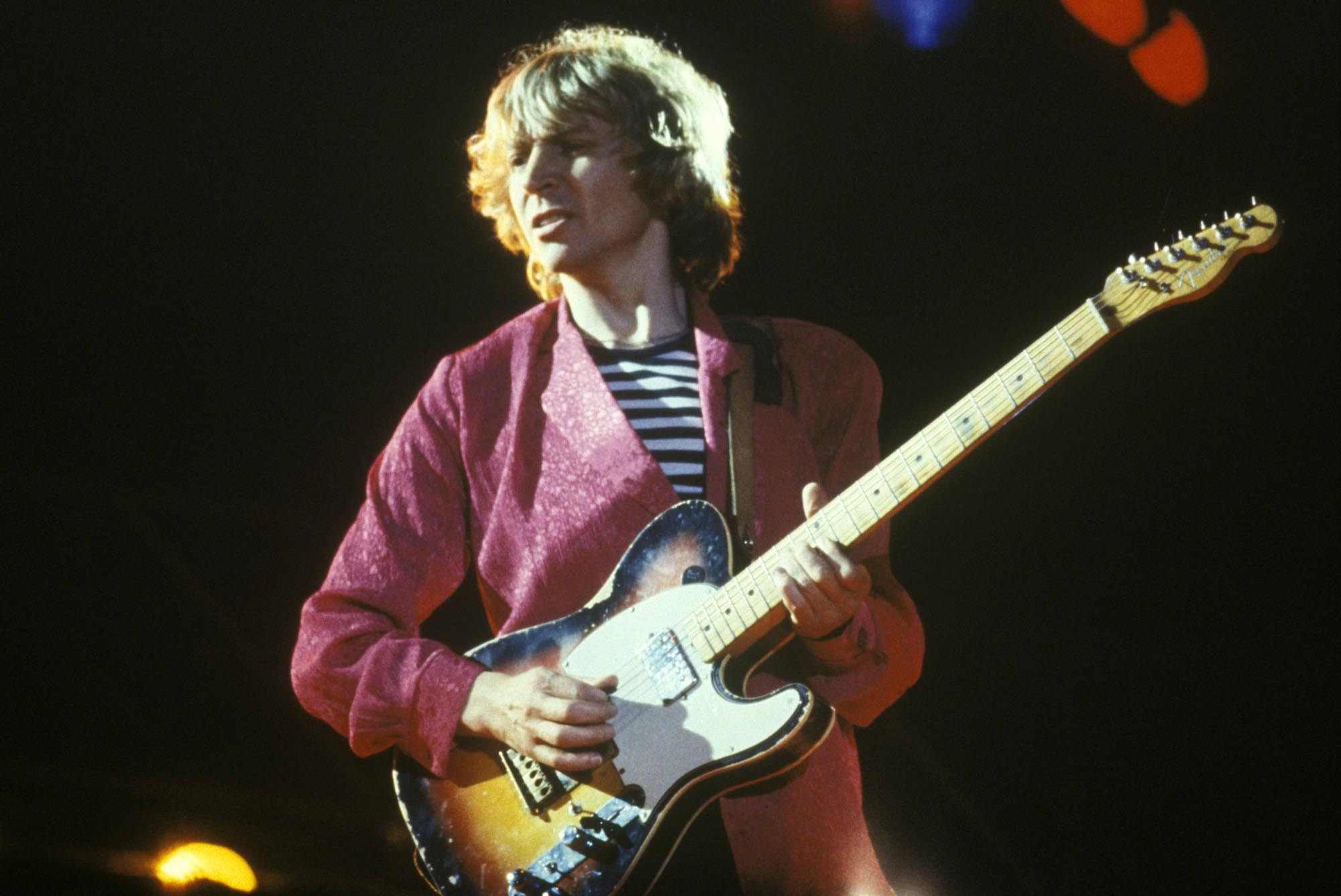 Andy Summers of The Police playing a Fender Telecaster guitar live onstage
Andy Summers of The Police playing a Fender Telecaster guitar live onstage
Image Credit: Graham Wiltshire/Redferns/Getty Images
Andy Summers redefined the power trio dynamic with The Police. Moving beyond punk’s limitations, he masterfully blended jazz harmonies and reggae rhythms into a potent rock and roll sound. Summers’ signature style was marked by its sparseness, utilizing clipped chords and dub-influenced sonic textures, creating ample space for Sting’s vocals and Stewart Copeland’s drumming. Alex Lifeson of Rush aptly described Summers’ impact: “His tone and style were just absolutely perfect — he left space around everything. And he can handle anything from beautiful acoustic playing to jazz to hybrid kinds of stuff.” His innovative approach to guitar made him one of the best guitar players of the new wave era.
Key Tracks: “Message in a Bottle,” “Every Breath You Take”
Brittany Howard

Image Credit: Sacha Lecca for Rolling Stone
From her beginnings with Alabama Shakes, Brittany Howard’s guitar playing has been characterized by its raw, organic feel, perfectly complementing her powerful vocals and soulful songwriting. Her rhythmic sensibility is remarkably elastic, evident in her interplay with Heath Fogg on tracks like “Don’t Wanna Fight.” Howard’s versatility extends to straight-ahead rock with Thunderbitch, and her solo album, Jaime, showcased her expansive musicianship, from the funk-infused rhythms of “History Repeats” to the heavy fuzz of “Presence.” Her ability to seamlessly blend genres and styles solidifies her place among the best guitar players of her generation.
Key Tracks: “History Repeats,” “Presence”
Robby Krieger
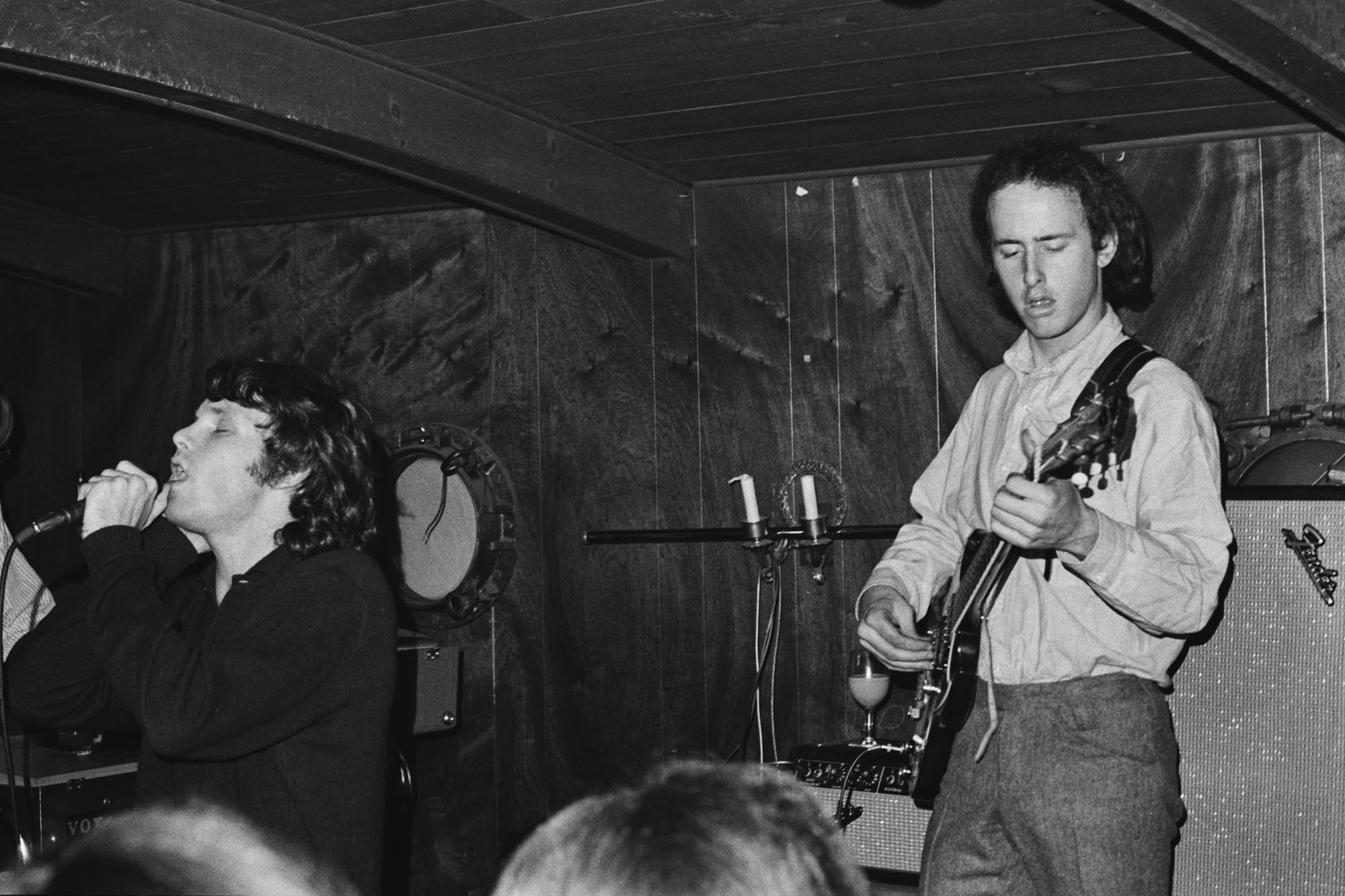 Robby Krieger of The Doors playing guitar onstage in 1966
Robby Krieger of The Doors playing guitar onstage in 1966
Image Credit: Don Paulsen/Michael Ochs Archives/Getty Images
Robby Krieger, with his flamenco and jazz background, transcended rock conventions at a time when blues still heavily influenced most guitarists. In The Doors, his improvisational skill allowed him to follow Jim Morrison’s unpredictable musical journeys. Krieger penned some of their biggest hits, including “Light My Fire,” and creatively compensated for the band’s bass-less lineup. He explained, “Not having a bass player … made me play more bass notes to fill out the bottom. Not having a rhythm player also made me play differently, to fill out the sound. I always felt like three players simultaneously.” Krieger’s unique approach to rhythm and melody established him as one of the best guitar players in rock history.
Key Tracks: “Riders on the Storm,” “Roadhouse Blues”
Ricky Wilson
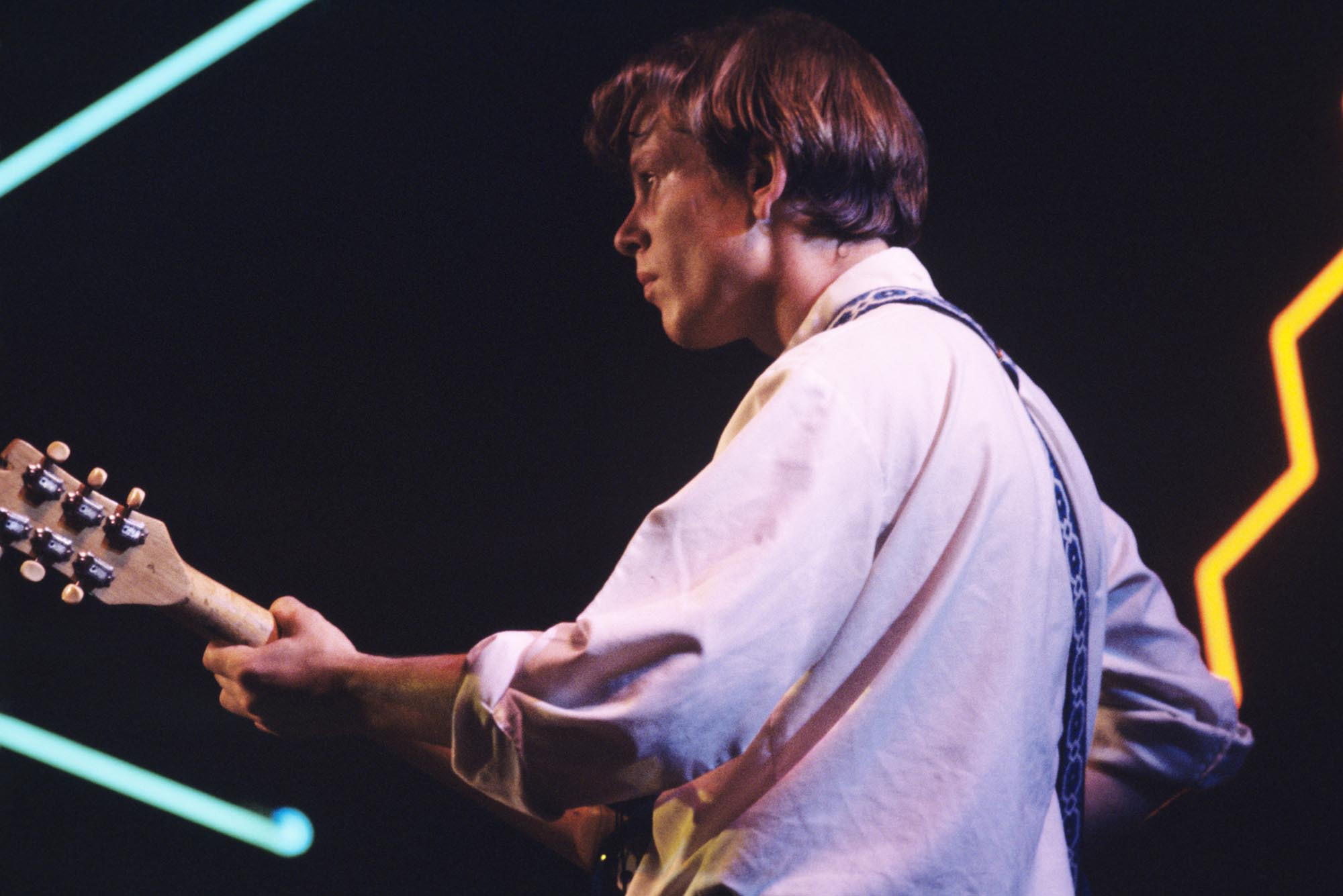 Ricky Wilson of The B-52s performing live in 1978
Ricky Wilson of The B-52s performing live in 1978
Image Credit: Tom Hill/WireImage
Ricky Wilson of The B-52s often appeared as a quiet force amidst the band’s flamboyant stage presence. However, his distinctive blend of chicken scratch funk, angular post-punk, rockabilly, and surf rock on classics like “52 Girls” and “Private Idaho” made him a pioneering figure of the New Wave era. Wilson frequently used only four or five strings on his Mosrite guitar and employed unconventional tunings to achieve his signature strange, spartan sound. “I just tune the strings till I hear something I like,” he once stated. His untimely death in 1985 marked a significant loss for the indie-rock scene, cementing his legacy as an unassuming yet radical innovator and one of the best guitar players of his time.
Key Tracks: “52 Girls,” “Mesopotamia”
Paul Simon
 Paul Simon playing acoustic guitar onstage in 1980
Paul Simon playing acoustic guitar onstage in 1980
Image Credit: Paul Natkin/Getty Images
Paul Simon, renowned for his lyrical prowess, expresses just as much through his guitar. Influenced by early doo-wop and rock and roll, Simon immersed himself in the folk revival, studying acoustic guitar mastery with Bert Jansch in England. He consistently absorbed new musical styles, exemplified in “Dazzling Blue,” where folk fingerpicking intertwines with Indian rhythms. Even in his 80s, his nimble guitar work remains a defining characteristic, as showcased on his 2023 album Seven Psalms. Simon’s lifelong dedication to evolving his guitar skills places him among the best guitar players who are also celebrated songwriters.
Key Tracks: “Dazzling Blue,” “Kathy’s Song”
Leslie West
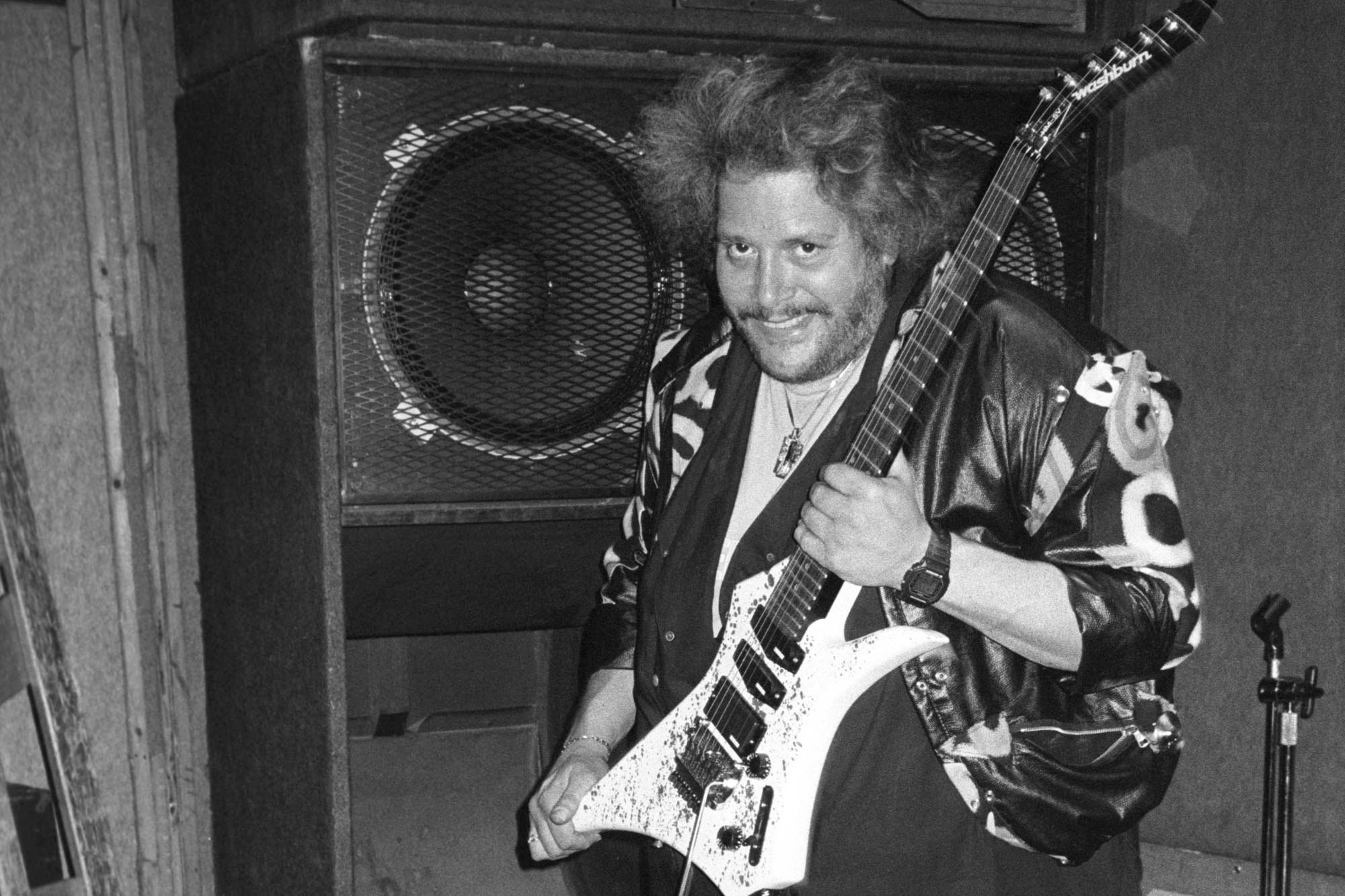 Leslie West of Mountain playing guitar onstage in 1977
Leslie West of Mountain playing guitar onstage in 1977
Image Credit: Erica Echenberg/Redferns/Getty Images
Leslie West (born Leslie Weinstein) first gained attention in mid-Sixties garage rock with The Vagrants’ powerful cover of Otis Redding’s “Respect.” By 1969, West’s heavy, Cream-influenced quartet, Mountain, emerged. On their 1970 hit “Mississippi Queen,” West delivered raw blues lines with surprising dexterity and an R&B sensibility, all fueled by massive amplifier distortion. Dave Davies of The Kinks remarked, “The riffs were incredible. He could play flashy, intricate phrases. But he wasn’t a look-at-me guy. He played with feel.” West’s impactful riffs and emotive playing style earmark him as one of the best guitar players in hard rock.
Key Tracks: “Mississippi Queen,” “Nantucket Sleighride (To Owen Coffin)”
Edilio Paredes
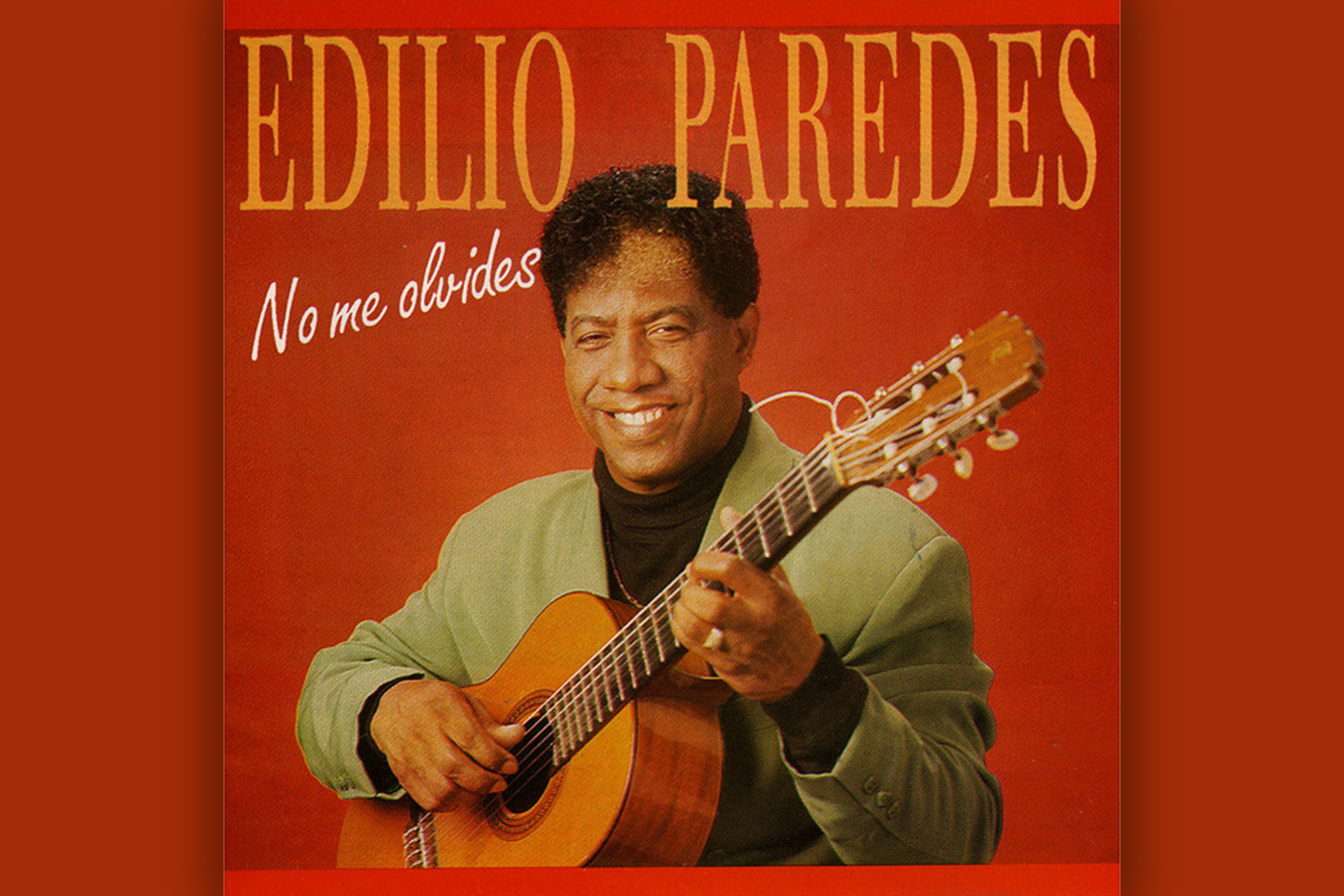 Edilio Paredes portrait
Edilio Paredes portrait
Edilio Paredes is the architect of bachata’s distinctive guitar sound. His intricate, spiraling guitar lines are integral to the genre, reflecting the bittersweet essence of lost love. A self-taught prodigy, Paredes was crucial in transitioning bachata from bolero campesino to its contemporary form, which gained global recognition in the Nineties. His extensive discography as a session musician from the 1960s to 1980s speaks volumes. His appearance on the album The Bachata Legends further solidified his status. Paredes’ pioneering role in shaping bachata’s sound makes him one of the best guitar players in Latin music.
Key Tracks: “No Me Olvides,” “Bendita Nena”
Aaron Dessner and Bryce Dessner
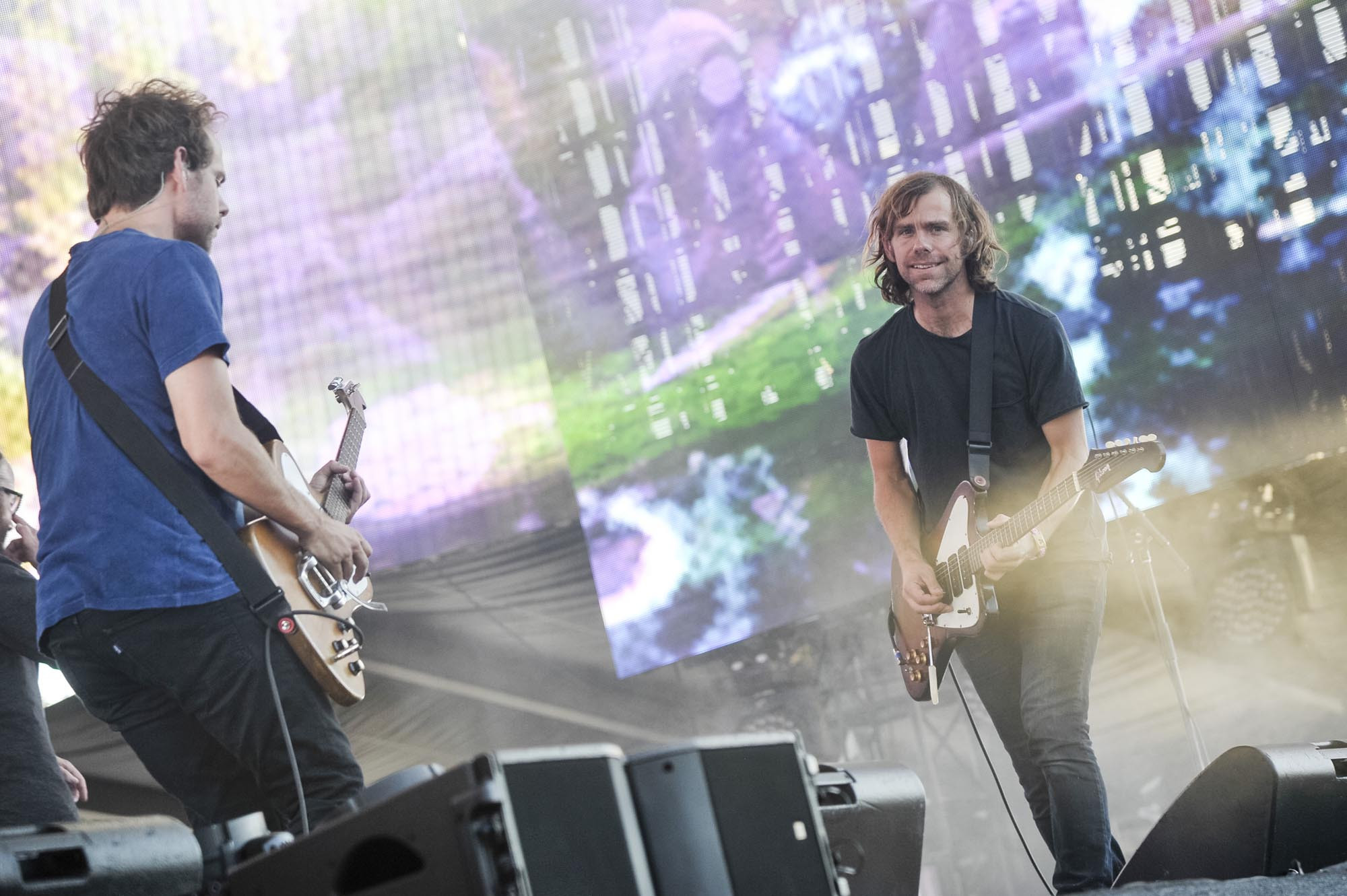 Aaron and Bryce Dessner of The National performing onstage in 2016
Aaron and Bryce Dessner of The National performing onstage in 2016
Image Credit: Kris Connor/FilmMagic
The National’s unique sound is driven by the virtuosic twin-guitar work of twin brothers Aaron and Bryce Dessner. Bryce has collaborated with luminaries like Steve Reich and Jonny Greenwood, while Aaron is Taylor Swift’s key collaborator on Folklore and Evermore. Together, the Dessner brothers create a spectrum of sound, from electric intensity in “Terrible Love” to folk intimacy in “I Need My Girl.” Their diverse collaborations and ability to seamlessly blend musical styles position them as two of the best guitar players working today.
Key Tracks: “Mr. November,” “Bloodbuzz Ohio,” “The System Only Dreams in Total Darkness”
Lindsey Jordan
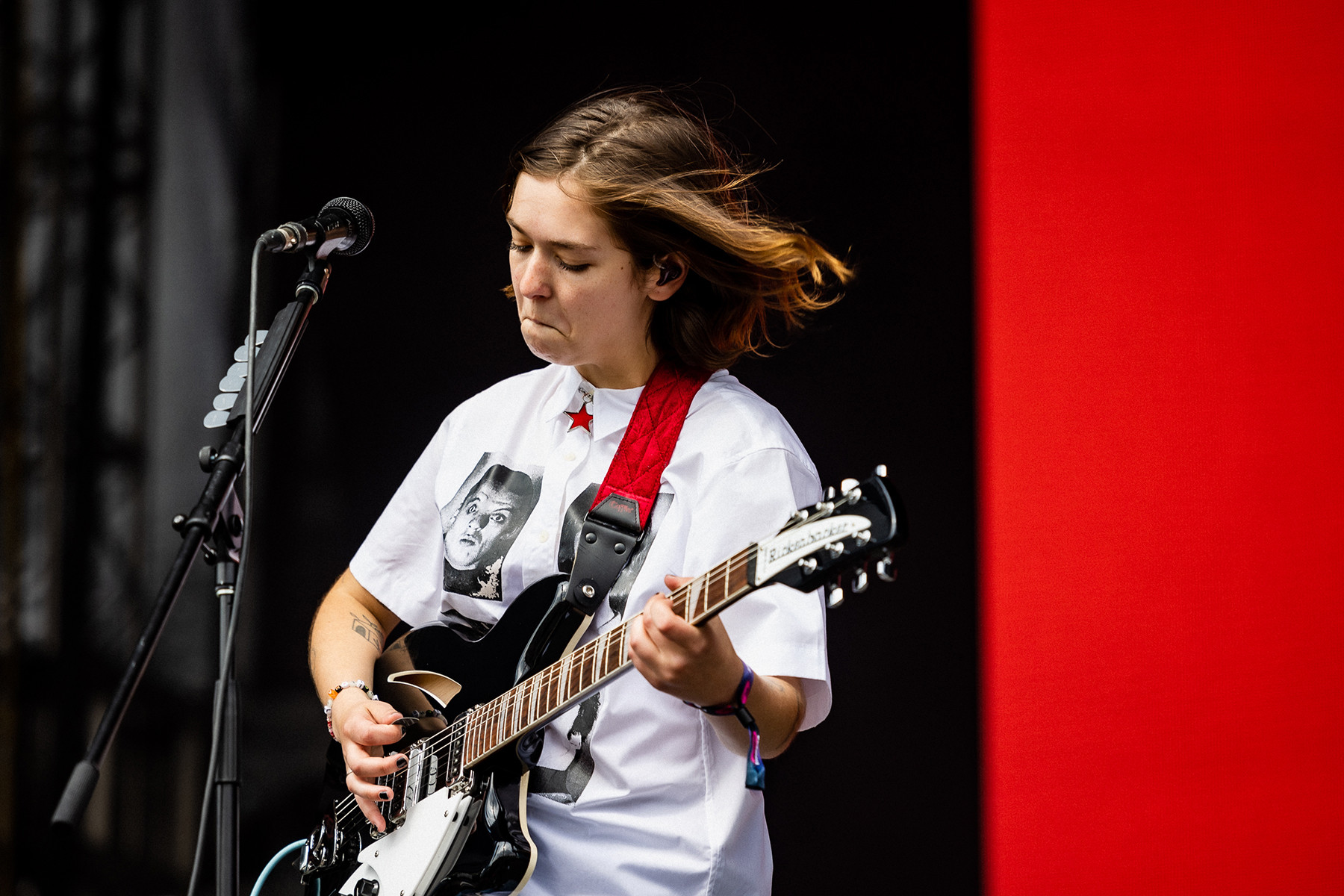 Lindsey Jordan of Snail Mail performing live in 2023
Lindsey Jordan of Snail Mail performing live in 2023
Image Credit: Griffin Lotz for Rolling Stone
Lindsey Jordan, the Gen Z guitar hero behind Snail Mail, learned from Mary Timony of Helium and Wild Flag. Her debut album Lush, released when she was just 18, showcased a fully formed indie-rock sensibility. Jordan is a natural virtuoso, effortlessly transitioning between strummed verses and explosive solos, drawing from Liz Phair’s lo-fi coolness and Sonic Youth’s expansive noise. “I like to play really balls out,” she told Rolling Stone. Her raw energy and mastery of indie rock guitar idioms make her one of the best guitar players of the new generation.
Key Tracks: “Heat Wave,” “Pristine”
Keith Urban
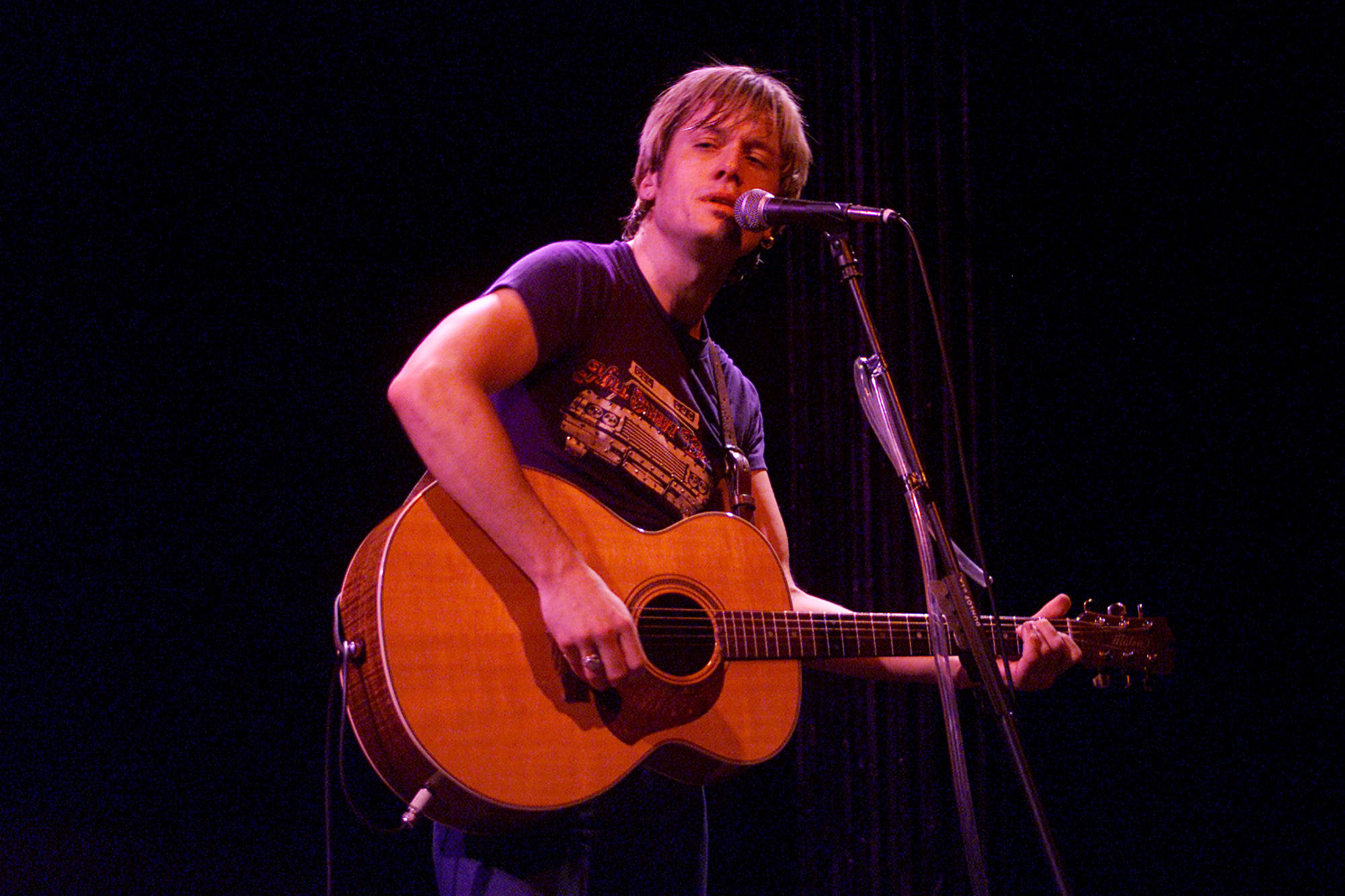 Keith Urban performing onstage in 2001
Keith Urban performing onstage in 2001
Image Credit: Frank Micelotta/Getty Images
Keith Urban stands out in Nashville for his effortless guitar style. His riffs, rhythms, and solos feel both natural and elevating to the song. While not overtly flashy, every note serves a purpose. His studio work is impressive, but he truly shines onstage, delivering guitar heroics comparable to rock legends. His versatility has led to collaborations with artists ranging from the Rolling Stones to Nile Rodgers. “I love that people want to hear the guitar,” Urban told Rolling Stone, “but I just think about the song … whatever the song seems to want.” Urban’s song-centric approach and dynamic stage presence solidify his place among the best guitar players in country and rock.
Key Tracks: “Highway Don’t Care,” “Blue Ain’t Your Color”
Erin Smith
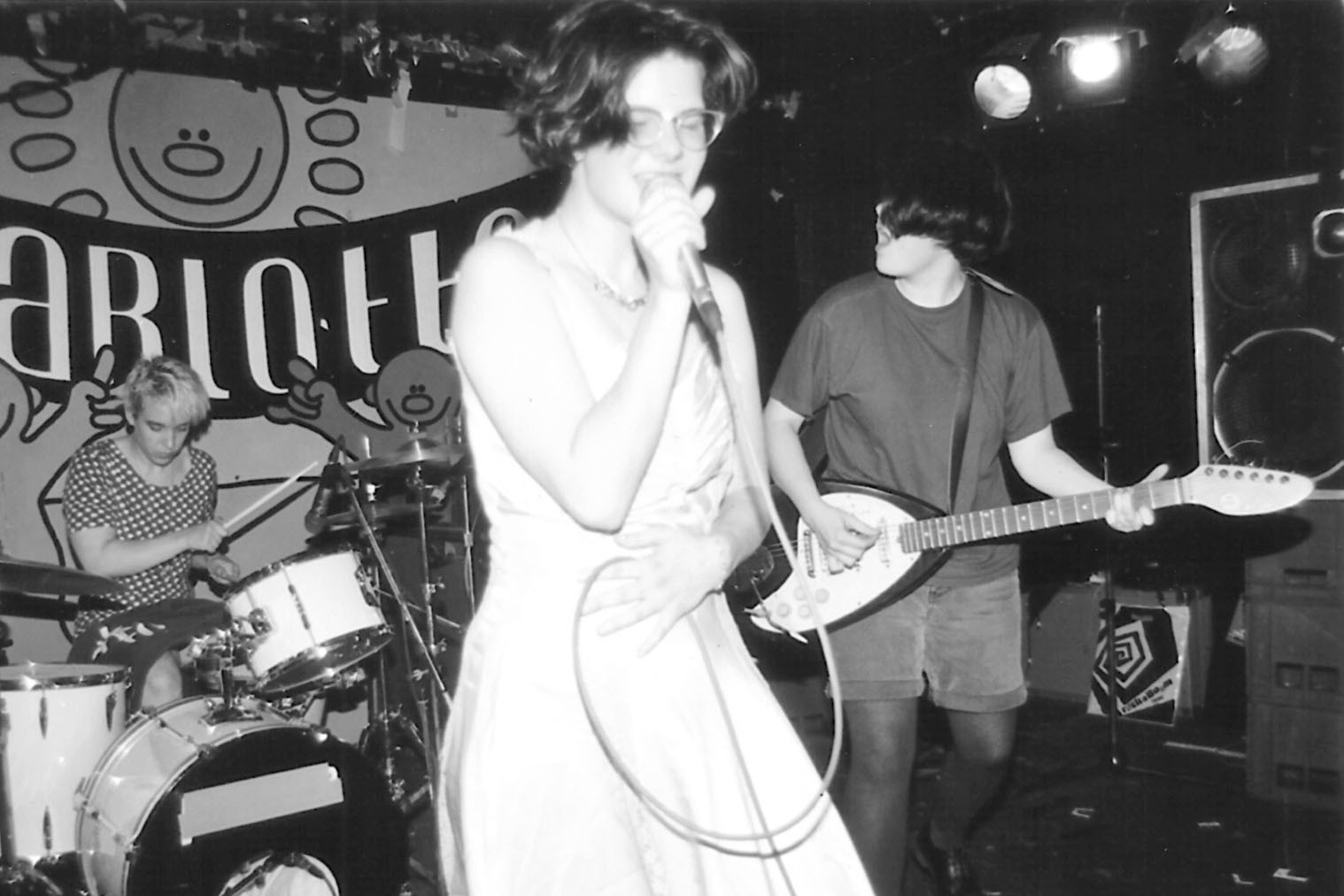
Image Credit: © Greg Neate/neatephotos.com/flickr CC BY 2.0
Erin Smith of Bratmobile, riot grrrl pioneers, was inspired by Beat Happening’s DIY ethos. “That was in ’87, and not only did I see women could play music, but I could see that just you could do it yourself,” she explained. Her style, blending melodic surf-rock bass lines with garage-rock chords, defined Bratmobile’s sound and made their album Pottymouth a landmark punk record. Smith’s raw, empowering approach to guitar makes her a key figure and one of the best guitar players in the riot grrrl movement.
Key Tracks: “Love Thing,” “P.R.D.C.T.”
Duane Eddy
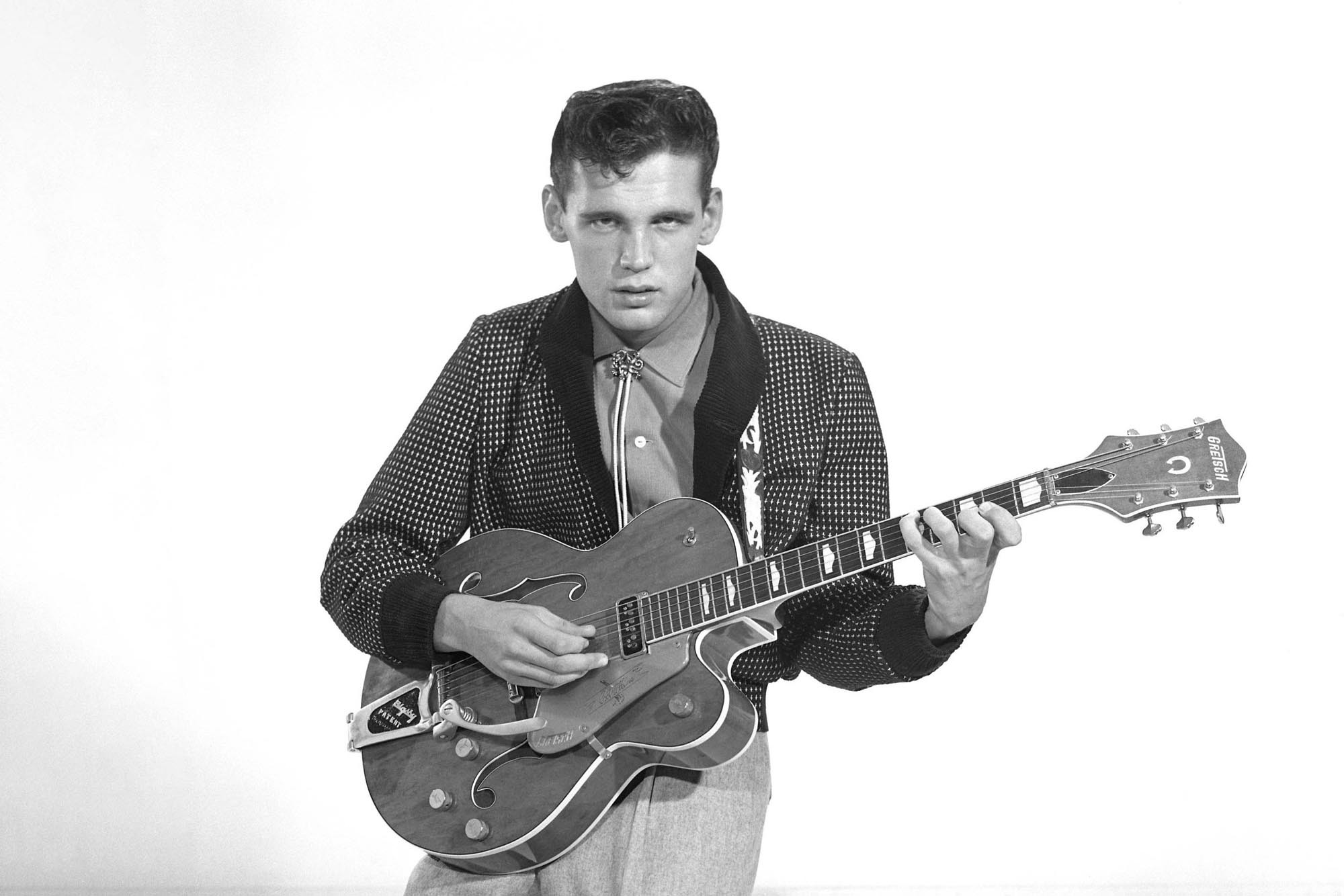 Duane Eddy posing with his guitar in 1958
Duane Eddy posing with his guitar in 1958
Image Credit: PoPsie Randolph/Michael Ochs Archives/Getty Images
Duane Eddy solidified the guitar’s dominance in rock and roll in the late 1950s. His 1958 hit “Rebel Rouser,” with its country twang and tremolo-laden sound, was groundbreaking. Dave Davies of The Kinks noted, “Chet Atkins used vibrato in a selective way — Duane Eddy used it to thrash the music.” Eddy’s hits like “Peter Gunn” profoundly influenced surf music and guitarists like Jeff Beck and George Harrison. His pioneering use of tremolo and impactful instrumental hits mark him as one of the best guitar players of early rock and roll.
Key Tracks: “Rebel Rouser,” “Peter Gunn”
Doug Gillard
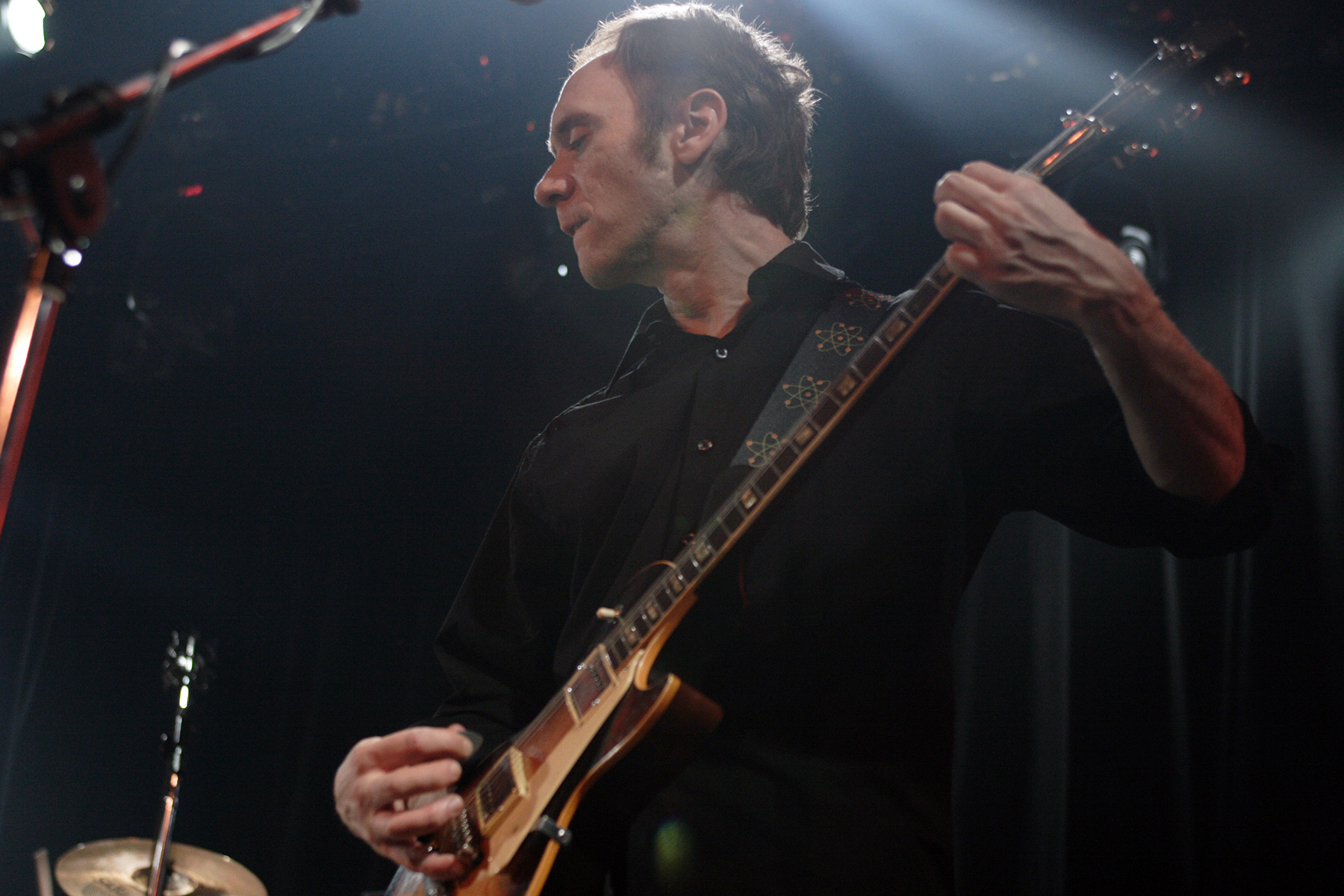 Doug Gillard of Guided By Voices performing live in 2004
Doug Gillard of Guided By Voices performing live in 2004
Image Credit: Matt Carmichael/Getty Images
Doug Gillard is the musical backbone of Guided By Voices, complementing Robert Pollard’s eccentric genius. He transforms Pollard’s experimental ideas into solid rock and roll, contributing to GBV’s prolific output. “I know his usual shapes and drones — or can pretty much decipher what they are if it’s a new shape — and replicate them on the rhythm parts on the records for the most part,” Gillard said. His ability to interpret and enhance Pollard’s vision makes him an essential and one of the best guitar players in indie rock.
Key Tracks: “I Am a Tree,” “Mr. Child”
Jennifer Batten
Image Credit: Catherine McGann/Getty Images
Jennifer Batten gained fame as Michael Jackson’s electrifying touring guitarist. Her role required her to master funk, soul, metal, and even Eddie Van Halen’s “Beat It” solo nightly. Her solo album, Above Below and Beyond, showcased her versatility, featuring renditions of classical pieces, Jackson hits, and jazz standards, all infused with her unique whammy bar and tapping techniques. She later toured and recorded with Jeff Beck, proving her ability to stand shoulder-to-shoulder with guitar legends and solidifying her place among the best guitar players known for both technical skill and stage presence.
Key Tracks: “Flight of the Bumblebee,” “Giant Steps (Rock Version)”
Greg Sage
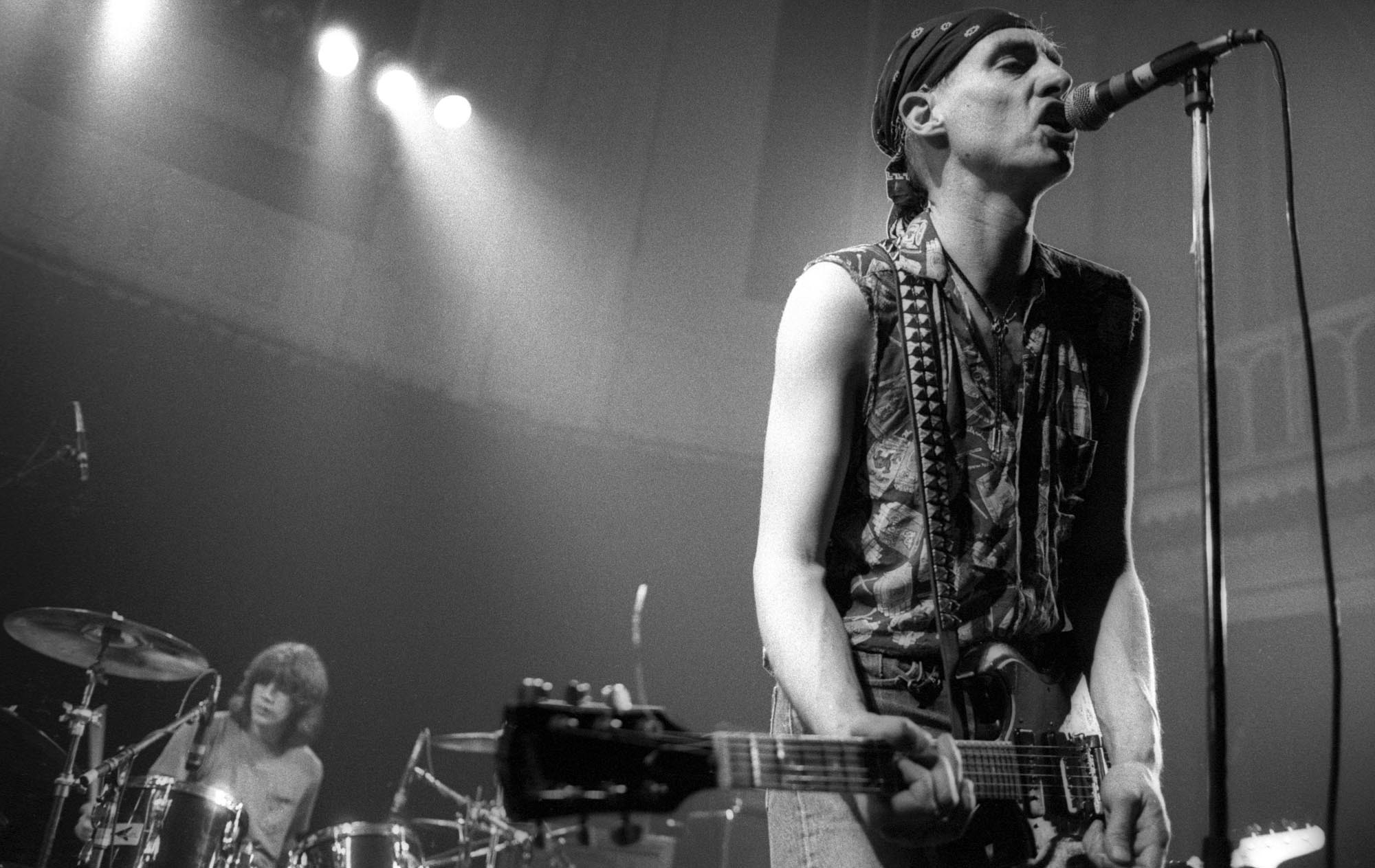 Greg Sage of The Wipers performing live in 1986
Greg Sage of The Wipers performing live in 1986
Image Credit: Frans Schellekens/Redferns/Getty Images
Greg Sage formed The Wipers in 1977, defying punk conventions with complex song structures and a uniquely distorted guitar sound. At a time of punk simplicity, Wipers songs like “When It’s Over” were expansive soundscapes, galvanizing the Pacific Northwest indie scene. Kurt Cobain called The Wipers his favorite band, stating, “We learned everything from the Wipers. They were playing a mix of punk and hard rock when nobody cared.” Sage’s innovative and influential sound places him as one of the best guitar players in punk and indie rock history.
Key Tracks: “When It’s Over,” “Up Front”
Laura Marling
Image Credit: Chiaki Nozu/WireImage
Laura Marling is a singer-songwriter and multi-instrumentalist known for her subtle virtuosity. She employs complex tunings and voicings that sound deceptively simple. “I Was an Eagle” exemplifies her use of DADDAD tuning, echoing Joni Mitchell’s influence through unusual phrasing and atonal flourishes. During lockdown, Marling shared her guitar expertise with fans through online tutorials. Her understated yet intricate guitar work marks her as one of the best guitar players in contemporary folk.
Key Tracks: “I Was an Eagle,” “Wild Fire,” “Ghosts”
John McGeoch
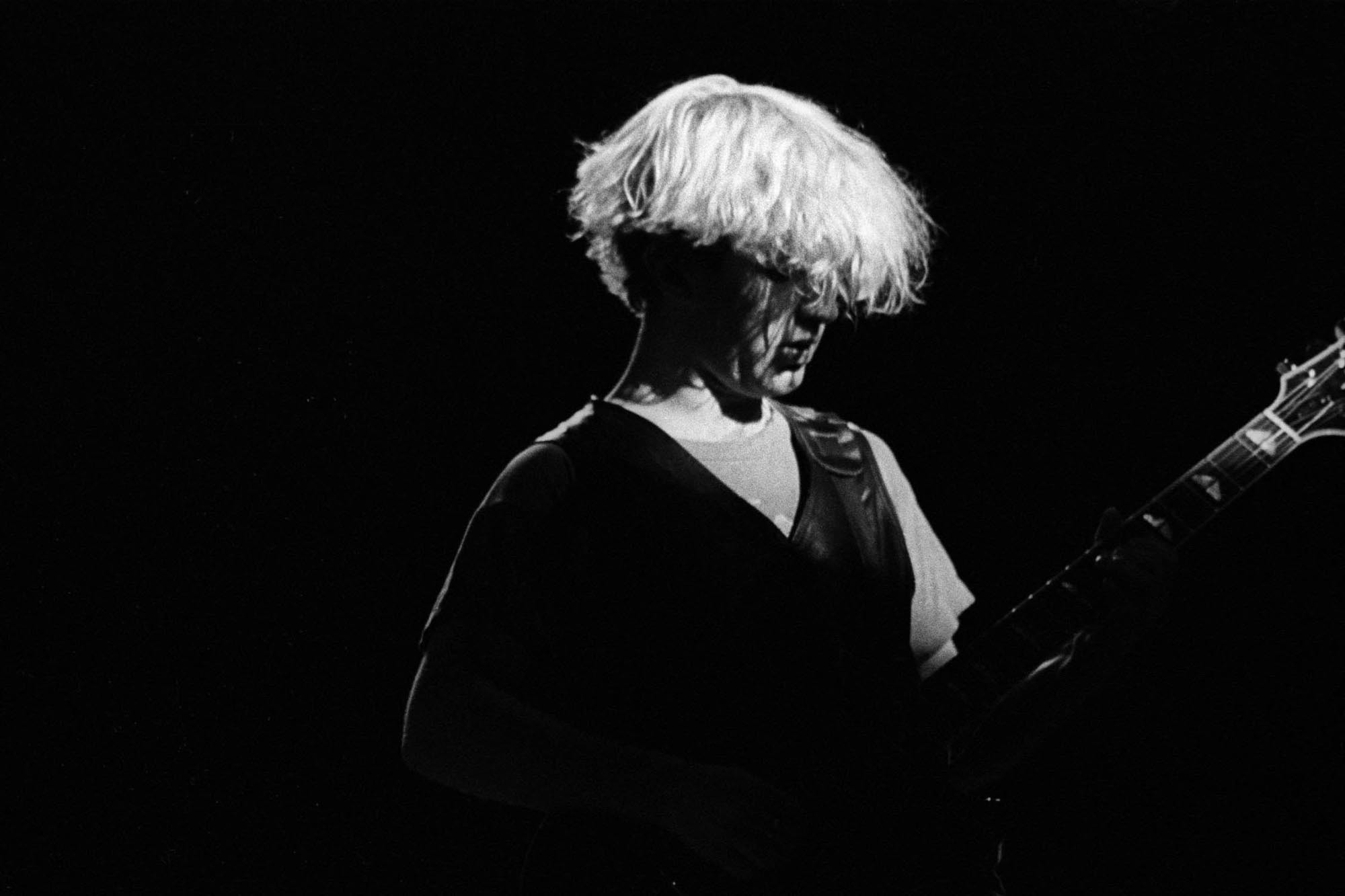 (MANDATORY CREDIT Ebet Roberts/Getty Images) John McGeoch of Siouxsie and The Banshees performing live in 1980
(MANDATORY CREDIT Ebet Roberts/Getty Images) John McGeoch of Siouxsie and The Banshees performing live in 1980
Image Credit: Ebet Roberts/Redferns/Getty Images
John McGeoch made a powerful entrance with Magazine’s “Shot by Both Sides,” a punk anthem. He then developed a unique, architectural guitar style with Magazine, Public Image Ltd, and Siouxsie and the Banshees. McGeoch’s admirers include Johnny Marr and Ed O’Brien. His blend of rhythm guitar, flange, and arpeggios defined the goth-guitar sound of the Banshees’ Juju, introducing a new atmospheric dimension to UK rock. His innovative and influential guitar work makes him one of the best guitar players of the post-punk and goth scenes.
Key Tracks: “Philadelphia,” “Spellbound”
H.E.R.
 H.E.R. performing at Spotify event in 2023
H.E.R. performing at Spotify event in 2023
Image Credit: David M. Benett/Getty Images
H.E.R. consistently amazes audiences with her musical talent. Her voice is rooted in classic R&B, but her guitar playing ranges from delicate accents to Prince-inspired shredding. “Hold On” features her signature squealing leads, mirroring her vocal melodies. “I also like to play my guitar like I’m singing,” she told Guitar World. Fender honored her with a signature Stratocaster, making her the first Black woman to receive this recognition. H.E.R.’s diverse guitar skills and innovative approach to R&B make her one of the best guitar players in contemporary music.
Key Tracks: “Hold On,” “Comfortable”
David Williams
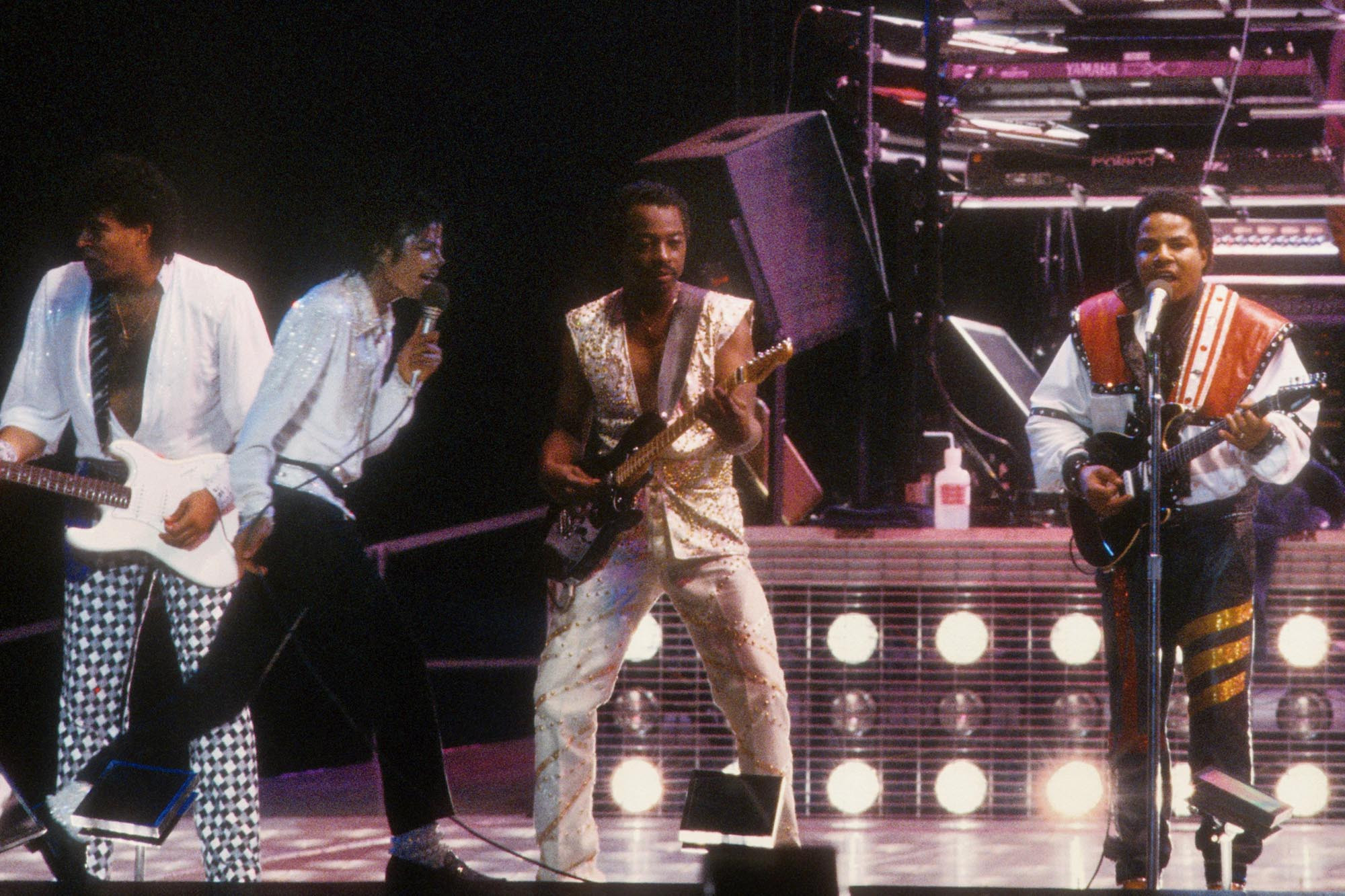 David Williams of The Jacksons performing onstage in 1984
David Williams of The Jacksons performing onstage in 1984
Image Credit: Michael Ochs Archive/Getty Images
David Williams, despite his jazz roots, became a defining guitarist in Eighties pop. His minimalist touches are key to the rhythmic allure of Michael Jackson’s “Billie Jean,” Stevie Nicks’ “Stand Back,” and Diana Ross’ “Muscles.” He toured with Jackson and Madonna, and worked with artists from Chaka Khan to Kenny Loggins. He described his “secret spice” as knowing “You don’t need much of it, but the right amount gets the job done.” Williams’ subtle yet impactful guitar work on countless hits makes him one of the best guitar players in pop music history.
Key Tracks: “Billie Jean,” “Dirty Diana”
Etta Baker
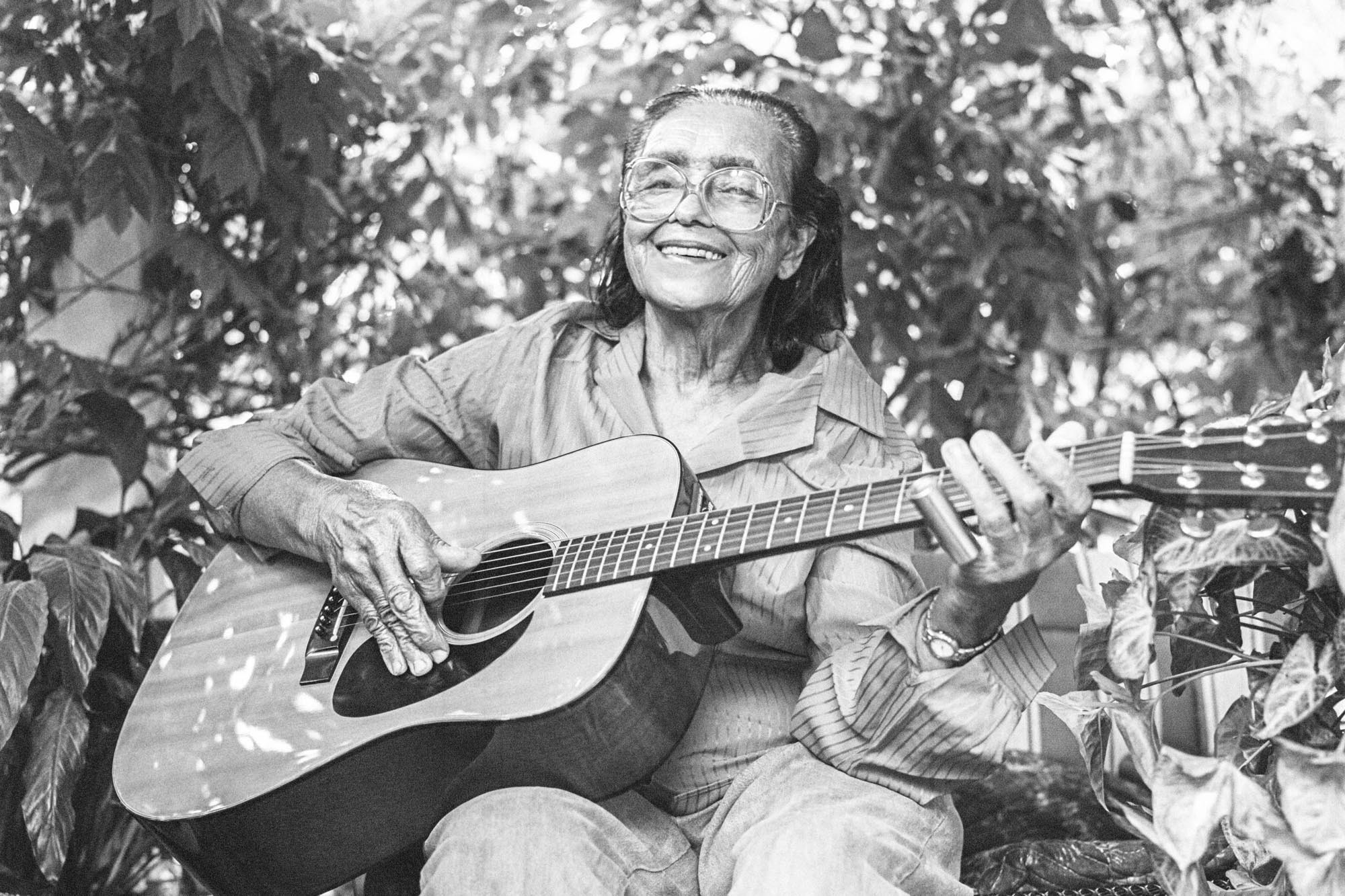
Image Credit: Timothy Duffy
Etta Baker is synonymous with Piedmont blues. Born in 1913, she learned guitar from her father and played dances as a child. Her instrumental compositions like “One Dime Blues” were influential, inspiring artists like Bob Dylan and Taj Mahal, who later recorded with her. Baker’s rolling, ragtime-influenced fingerpicking style is a cornerstone of American folk and blues guitar, making her one of the best guitar players in the Piedmont blues tradition.
Key Tracks: “One Dime Blues,” “Carolina Breakdown”
Gustavo Cerati
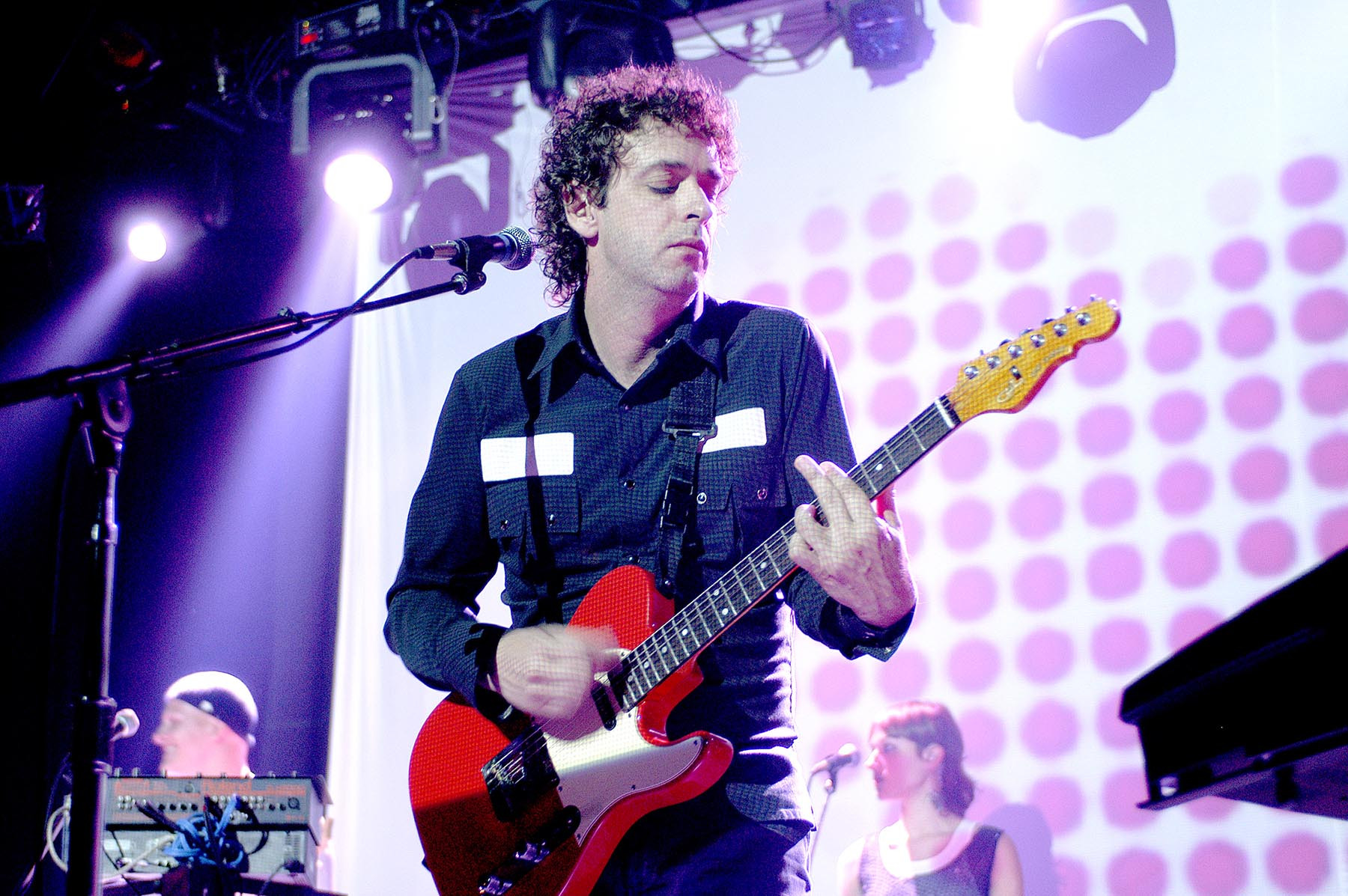 Gustavo Cerati performing onstage in 2003
Gustavo Cerati performing onstage in 2003
Image Credit: Paul Natkin/Getty Images
Gustavo Cerati transformed Latin rock with his band Soda Stereo, leading the rock en español boom. Beyond songwriting, he was an extraordinary guitarist. After Soda Stereo, he experimented with electronic music but returned to guitar-god mode with Ahí Vamos, filled with electric riffs. Cerati’s guitar prowess and impact on Latin rock culture establish him as one of the best guitar players from Latin America.
Key Tracks: “Canción Animal,” “La Excepción”
Barbara Lynn
 Barbara Lynn posing with her guitar in 1964
Barbara Lynn posing with her guitar in 1964
Image Credit: Michael Ochs Archives/Getty Images
Barbara Lynn’s 1962 R&B hit “You’ll Lose a Good Thing” launched a 60-year career. A self-taught left-handed guitarist playing a right-handed guitar, her songs have been covered and sampled by major artists. Her relatable songwriting and unique guitar style make her one of the best guitar players in R&B and blues.
Key Tracks: “You’ll Lose a Good Thing,” “I’ll Suffer”
Steve Jones
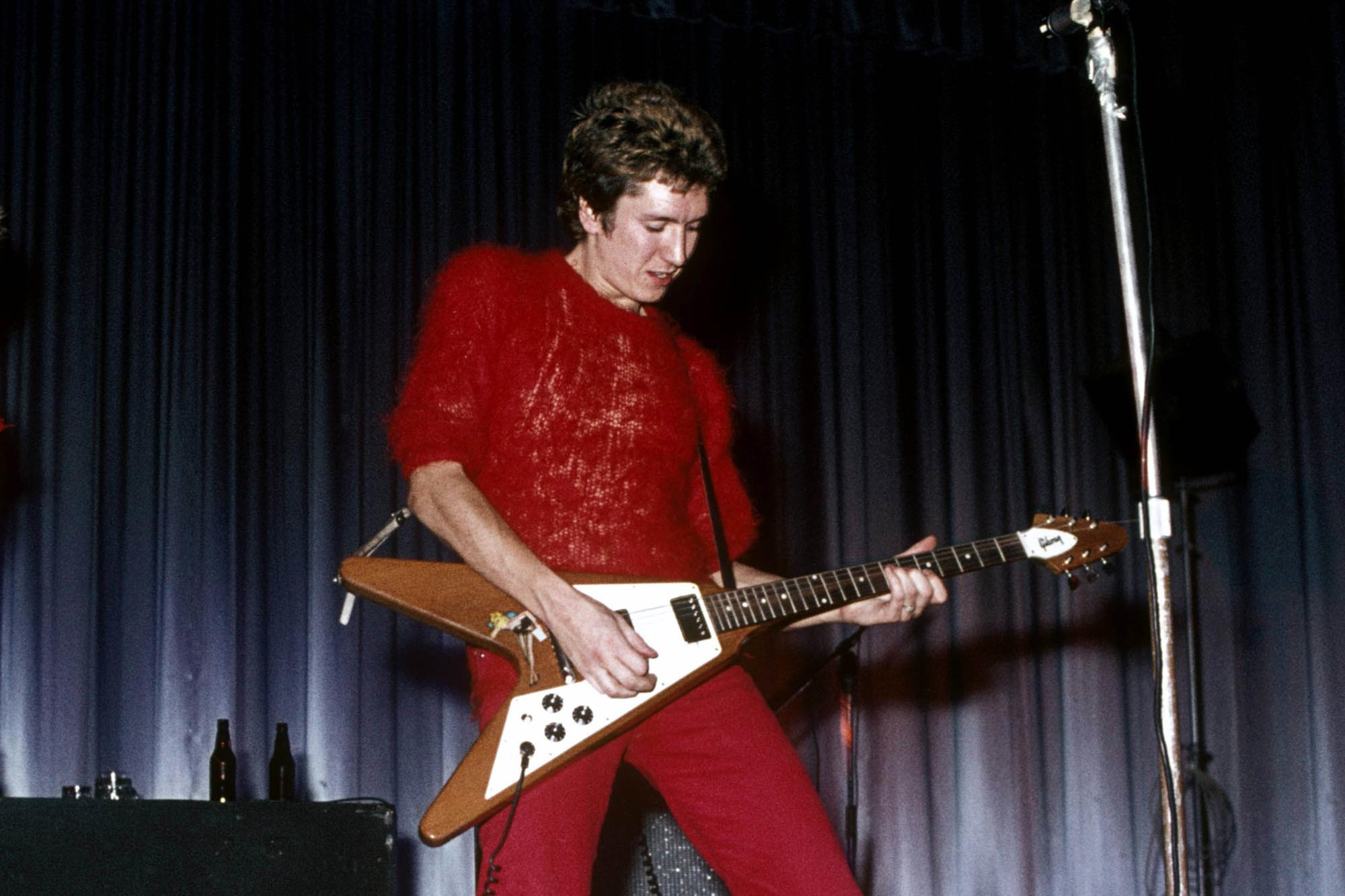 Steve Jones of Sex Pistols performing onstage in 1977
Steve Jones of Sex Pistols performing onstage in 1977
Image Credit: Chris Morphet/Redferns/Getty Images
Steve Jones, Sex Pistols guitarist, wielded his Les Paul Custom as a weapon of punk rebellion. His raw power chords and flamboyant solos mirrored Johnny Rotten’s confrontational style, setting a punk guitar standard. Never Mind the Bollocks… inspired guitarists from Slash to Billie Joe Armstrong. His legacy is as much about attitude as sound, making him one of the best guitar players in punk rock.
Key Tracks: “God Save the Queen,” “Pretty Vacant”
Glenn Branca
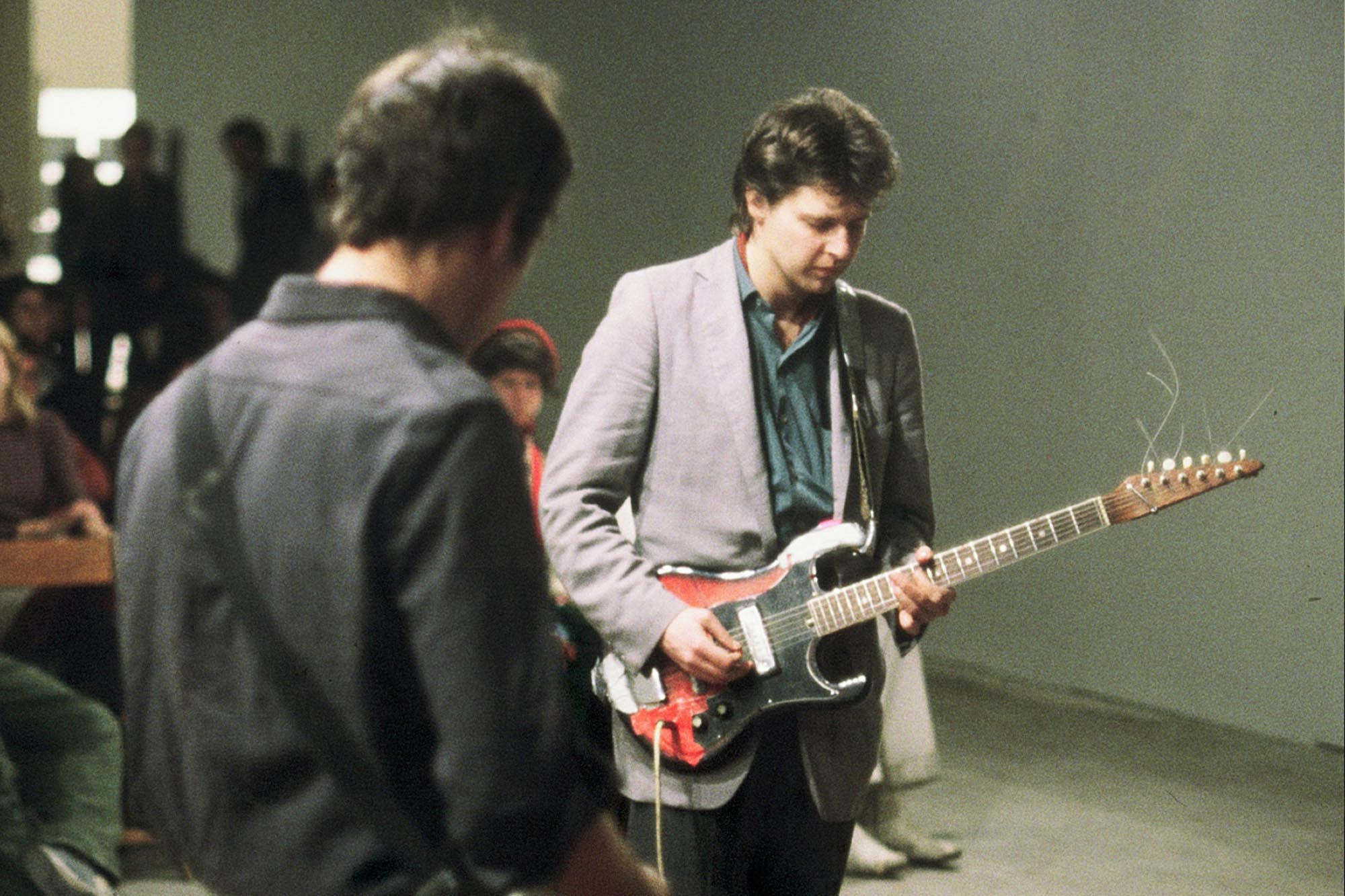 Glenn Branca portrait
Glenn Branca portrait
Image Credit: Hallwalls Archive/CC BY 3.0
Glenn Branca, a No Wave pillar, redefined the guitar as a symphonic instrument. He composed for guitar ensembles up to 100 players, using custom tunings and modifications. His Symphony No. 1 featured Thurston Moore and Lee Ranaldo of Sonic Youth. Branca’s experimental approach and influence on Sonic Youth mark him as one of the best guitar players in avant-garde music.
Key Tracks: “Light Field (In Consonance),” “Velvets and Pearls”
El Kempner
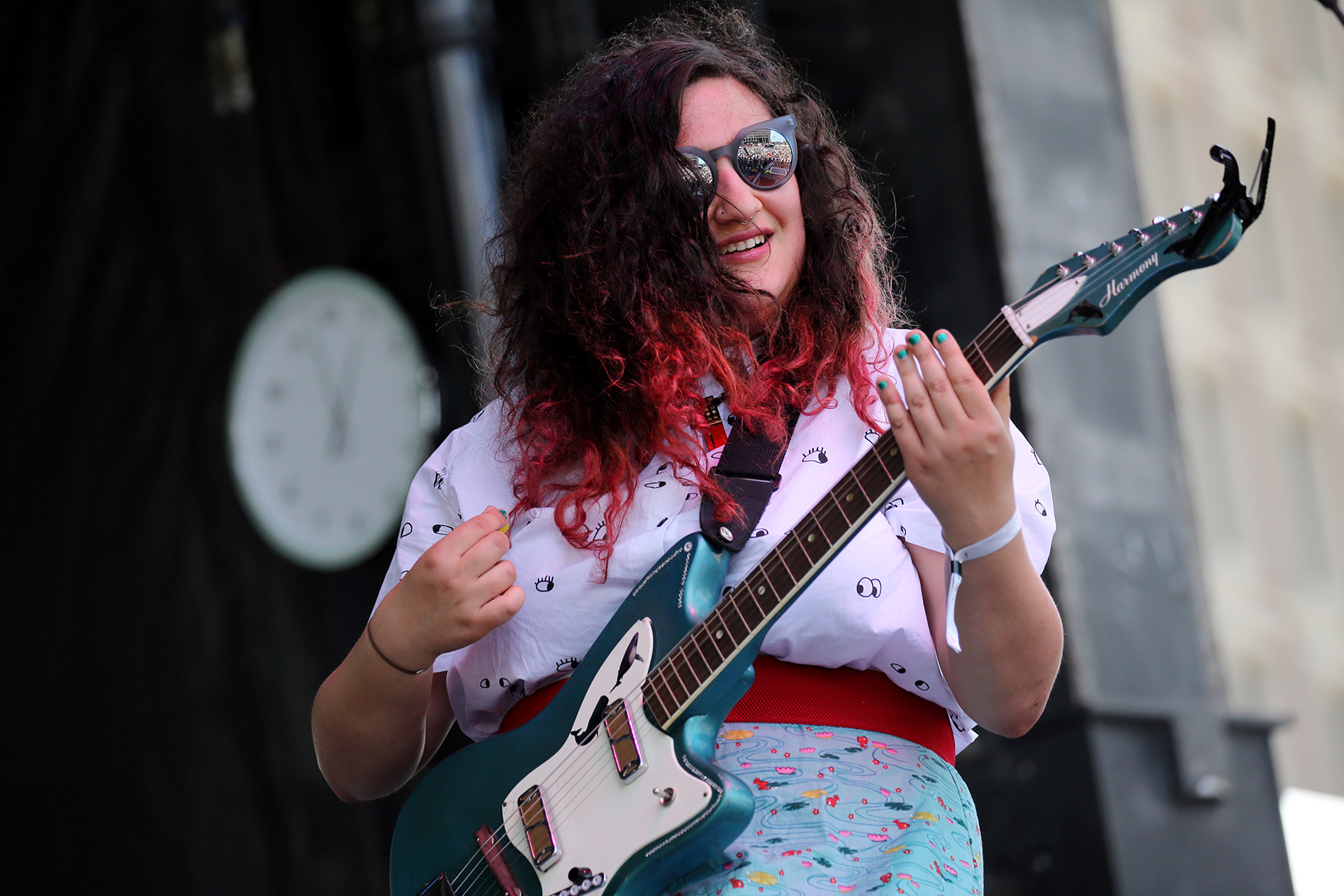 El Kempner of Palehound performing live in 2016
El Kempner of Palehound performing live in 2016
Image Credit: Craig F. Walker/The Boston Globe/Getty Images
El Kempner of Palehound started playing guitar at age seven. Their musical dexterity elevates tracks like “The Clutch.” Kempner’s versatility shines whether rocking out on electric guitar, fingerpicking acoustic melodies, or creating swirling arpeggios. Their refined skill and adaptability make them one of the best guitar players in contemporary indie rock.
Key Tracks: “The Clutch,” “Independence Day”
Fred ‘Sonic’ Smith and Wayne Kramer
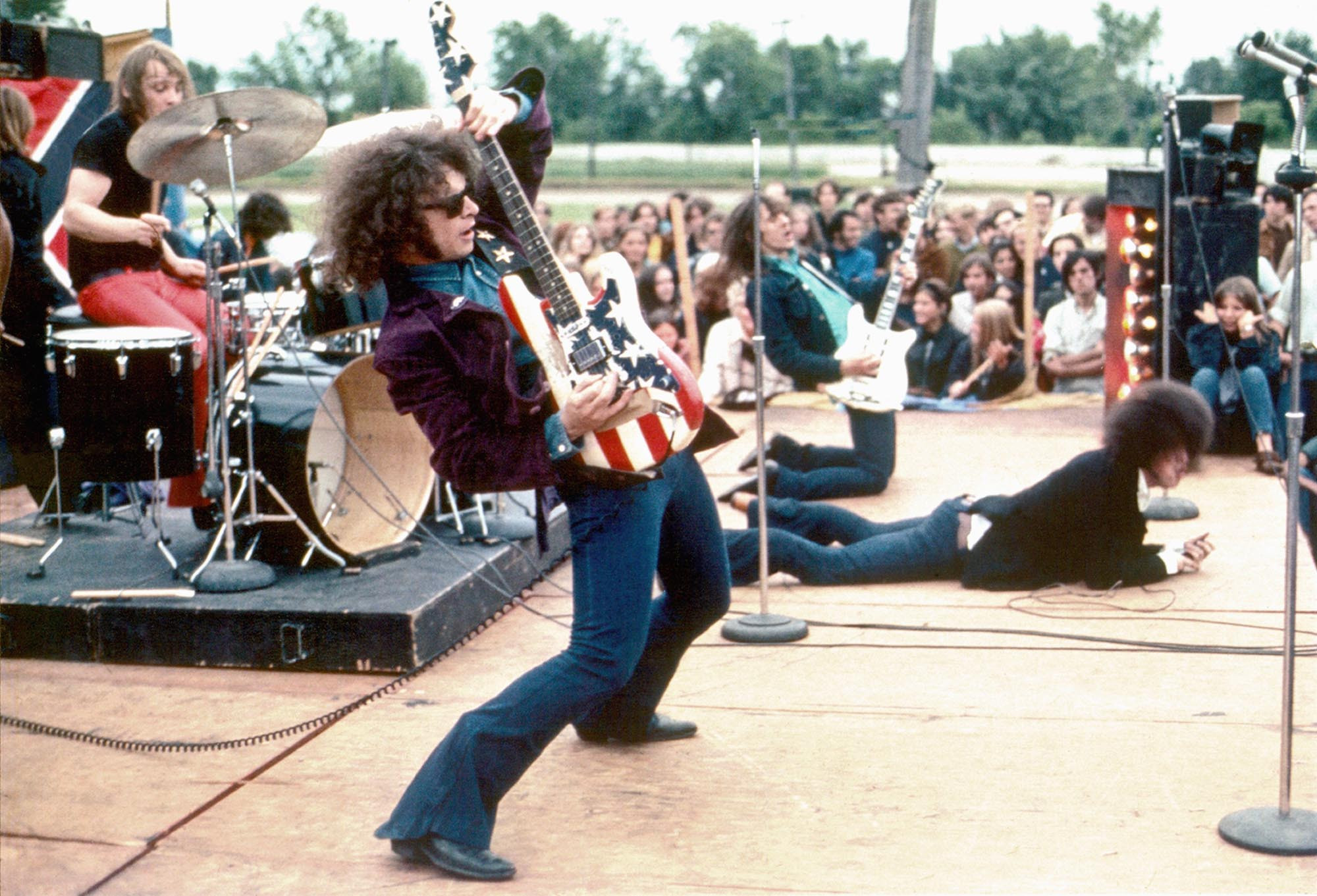 Wayne Kramer and Fred "Sonic" Smith of MC5 performing live in 1969
Wayne Kramer and Fred "Sonic" Smith of MC5 performing live in 1969
Image Credit: Leni Sinclair/Michael Ochs Archive/Getty Images
MC5’s guitar duo, Wayne Kramer and Fred “Sonic” Smith, combined Chuck Berry, Motown, and free jazz influences. Their high-energy jams were legendary. Kramer noted their synchronized playing: “We just found that we could play syncopated rhythm parts simultaneously, and they would lock in perfectly, or we could solo simultaneously and they’d still lock in.” Their dynamic interplay makes them two of the best guitar players in proto-punk.
Key Tracks: “Looking at You,” “Poison”
Marv Tarplin
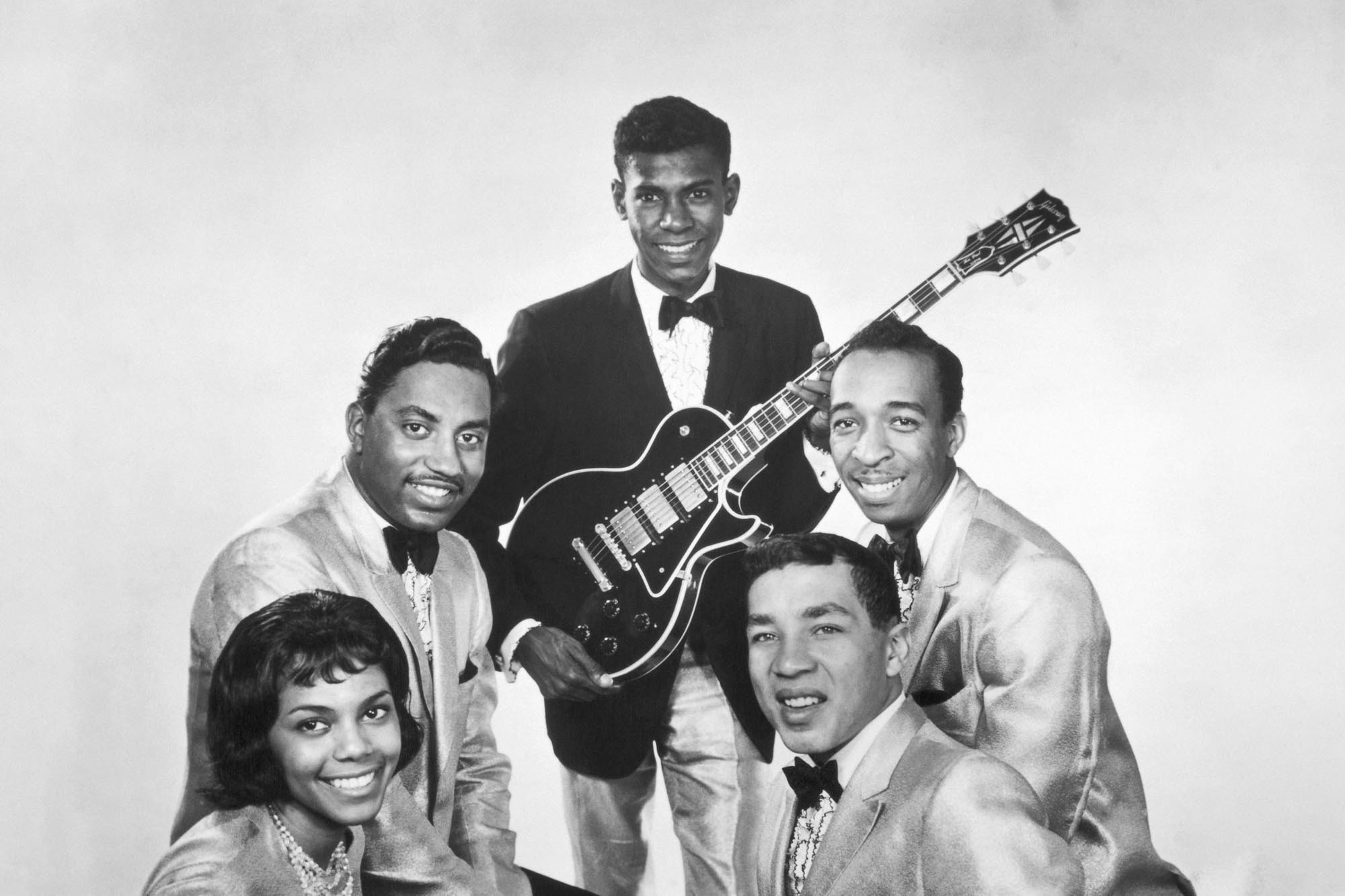 Marv Tarplin of Smokey Robinson and The Miracles posing in 1962
Marv Tarplin of Smokey Robinson and The Miracles posing in 1962
Image Credit: Michael Ochs Archives/Getty Images
Marv Tarplin was essential to Smokey Robinson and the Miracles’ success. His versatility ranged from driving chords on “Going to a Go-Go” to delicate 12-string on “You Really Got a Hold on Me.” His chord exploration led to “The Tracks of My Tears.” His contributions to Motown and Smokey Robinson’s solo work make him one of the best guitar players in soul music.
Key Tracks: “The Tracks of My Tears,” “Cruisin’”
Joseph Spence
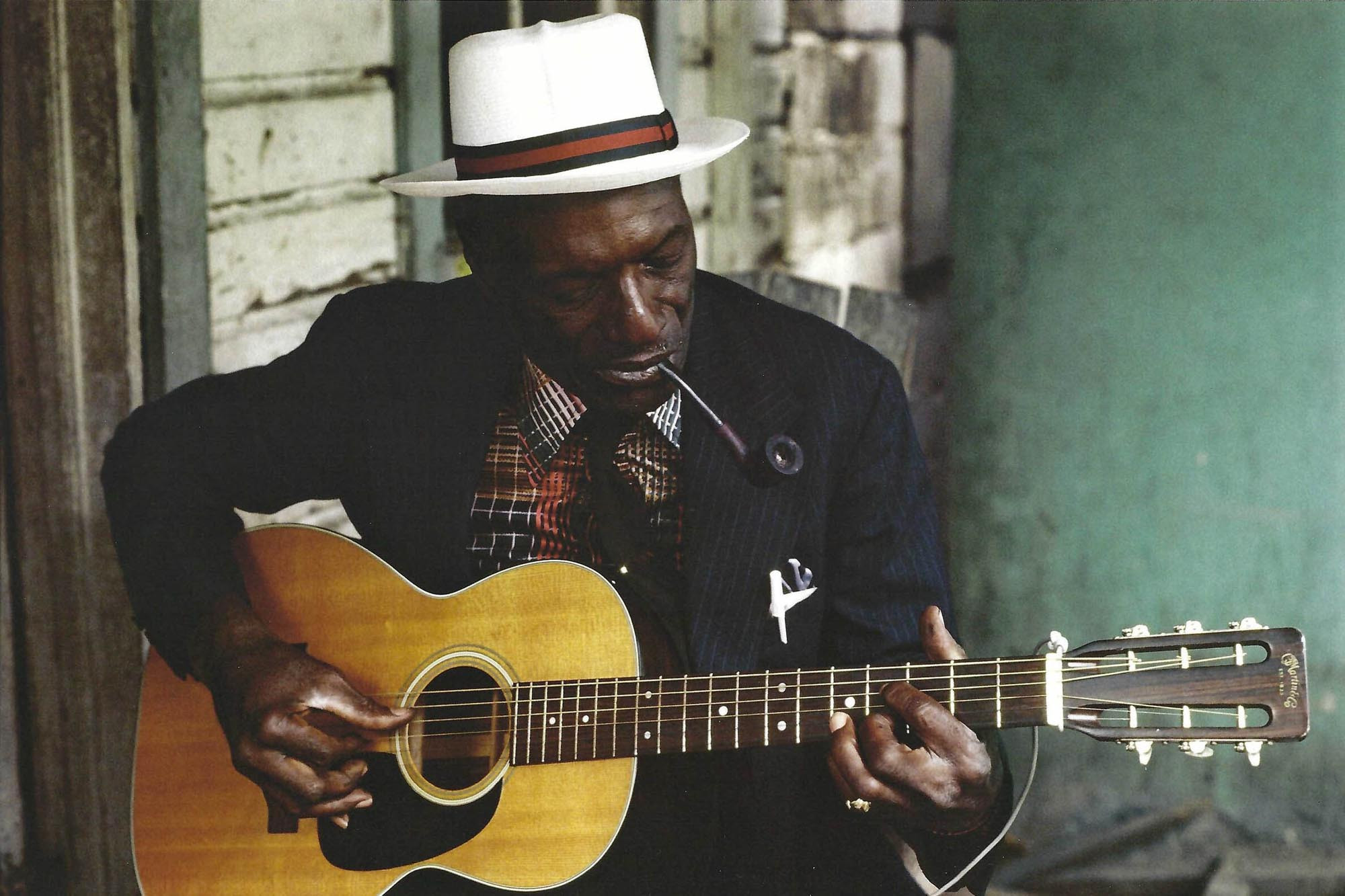
Image Credit: Guy Droussart
Joseph Spence’s Bahamian guitar playing was so rich it sounded like two guitarists. His pointillistic fingerpicking influenced folk and beyond. The Grateful Dead covered his “We Bid You Goodnight,” and The Beach Boys’ “Sloop John B” is indebted to his version. Spence’s unique fingerstyle and influence make him one of the best guitar players in folk and world music.
Key Tracks: “Brownskin Girl,” “Jump in the Line”
Molly Tuttle
 Molly Tuttle performing onstage in 2014
Molly Tuttle performing onstage in 2014
Image Credit: Scott Dudelson/Getty Images
Molly Tuttle is a bluegrass innovator. Her flatpicking, influenced by Tony Rice and Joni Mitchell, pushes bluegrass boundaries. She was the first bluegrass act nominated for a Best New Artist Grammy. “Our generation of bluegrass players are really pushing in some new directions,” Tuttle told Rolling Stone. Her groundbreaking approach places her among the best guitar players in bluegrass today.
Key Tracks: ‘Take the Journey,” “El Dorado”
James Blood Ulmer
 James Blood Ulmer portrait
James Blood Ulmer portrait
Image Credit: Peter Noble/Redferns/Getty Images
James Blood Ulmer fused blues, funk, and jazz guitar. His tone influenced the downtown New York experimental scene. Vernon Reid called him “unapologetically himself. He is the blues. Itself. Not its rules.” Ulmer’s genre-bending style and influence make him one of the best guitar players in experimental jazz and rock.
Key Tracks: “Theme from Captain Black,” “Timeless”
Courtney Barnett
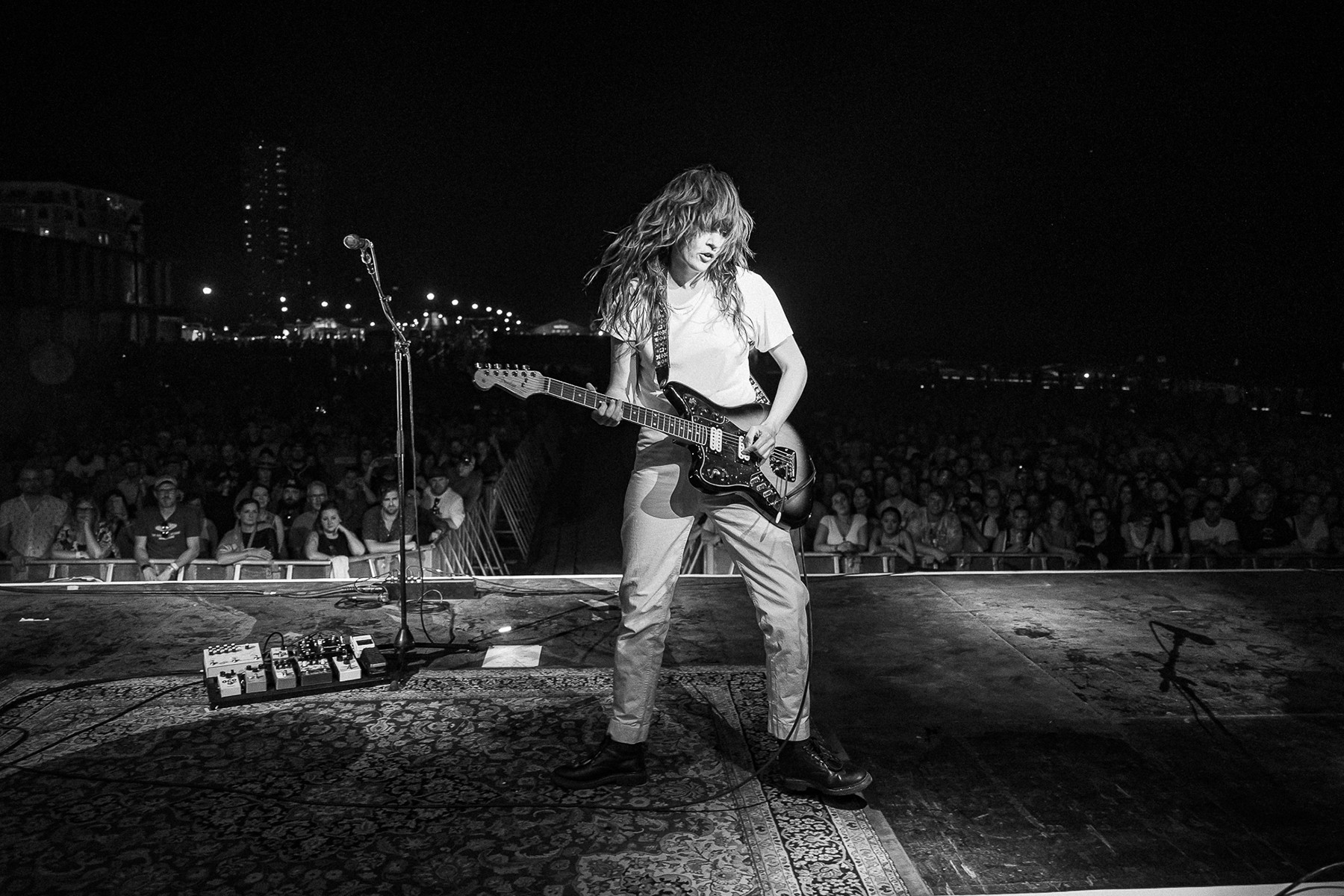 Courtney Barnett playing guitar onstage
Courtney Barnett playing guitar onstage
Image Credit: Griffin Lotz for Rolling Stone
Courtney Barnett shifts between fingerpicking and garage-rock solos, enhancing her storytelling. “It sounds like you’re driving across a highway and it’s sunny,” Barnett said of her guitar work. Her collaboration with Kurt Vile showcases dazzling guitar chemistry. Barnett’s dynamic guitar playing and songwriting make her one of the best guitar players in indie rock.
Key Tracks: “Turning Green,” “Over Everything,” “Pedestrian at Best”
Glenn Tipton and K.K. Downing
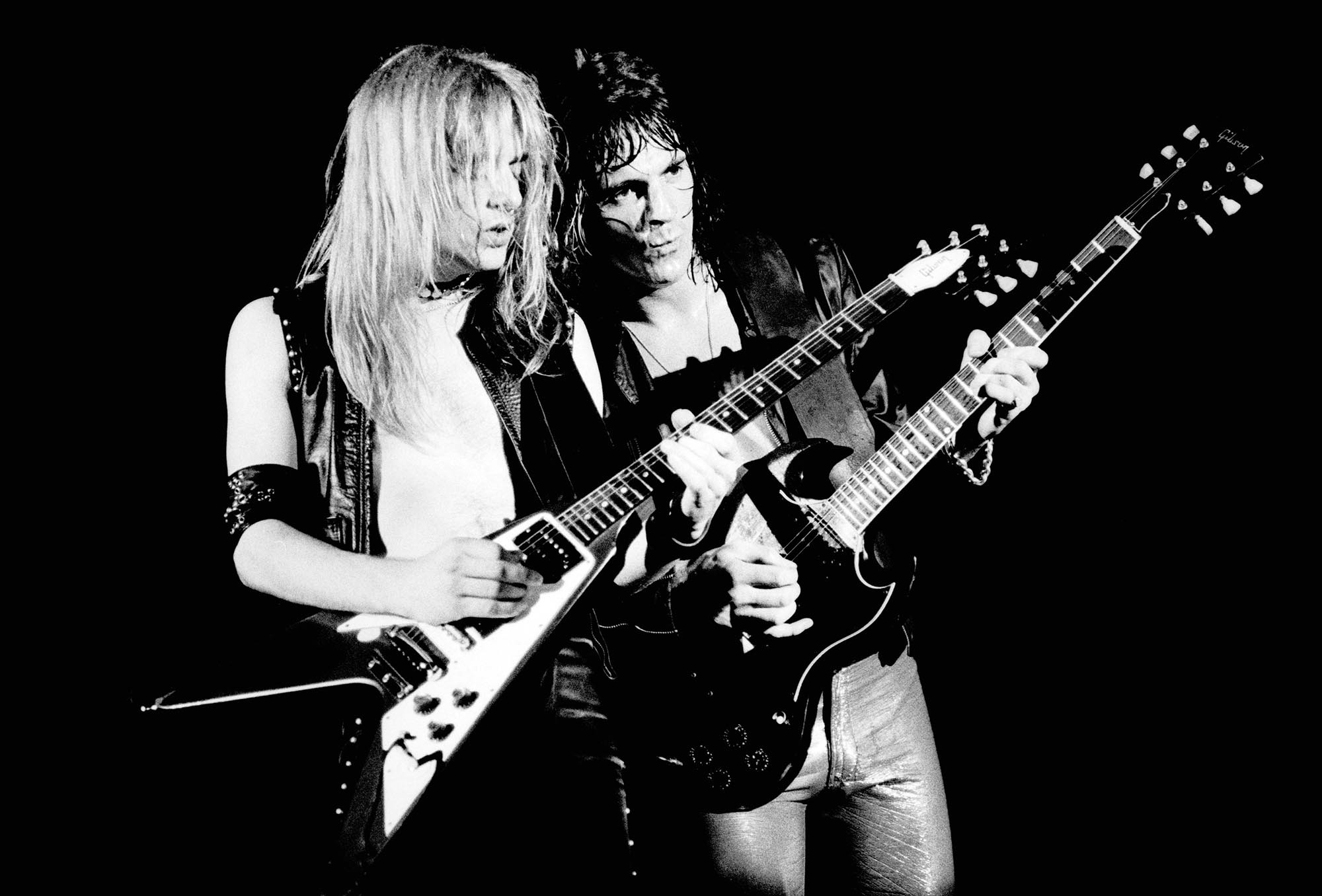 K.K. Downing and Glenn Tipton of Judas Priest performing onstage in 1978
K.K. Downing and Glenn Tipton of Judas Priest performing onstage in 1978
Image Credit: Gus Stewart/Redferns/Getty Images
Judas Priest’s Glenn Tipton and K.K. Downing redefined heavy metal with two guitarists. They doubled riffs, traded solos, and used harmony leads, setting the template for two-guitar metal bands. Kerry King of Slayer noted, “If it’s Tipton, it’s super-fucking tasty. If it’s K.K., it’s a more edgy, almost punky kind of vibe.” Their dual guitar attack makes them two of the best guitar players in heavy metal history.
Key Tracks: “Victim of Changes,” “Breaking the Law,” “The Hellion/Electric Eye”
Lzzy Hale
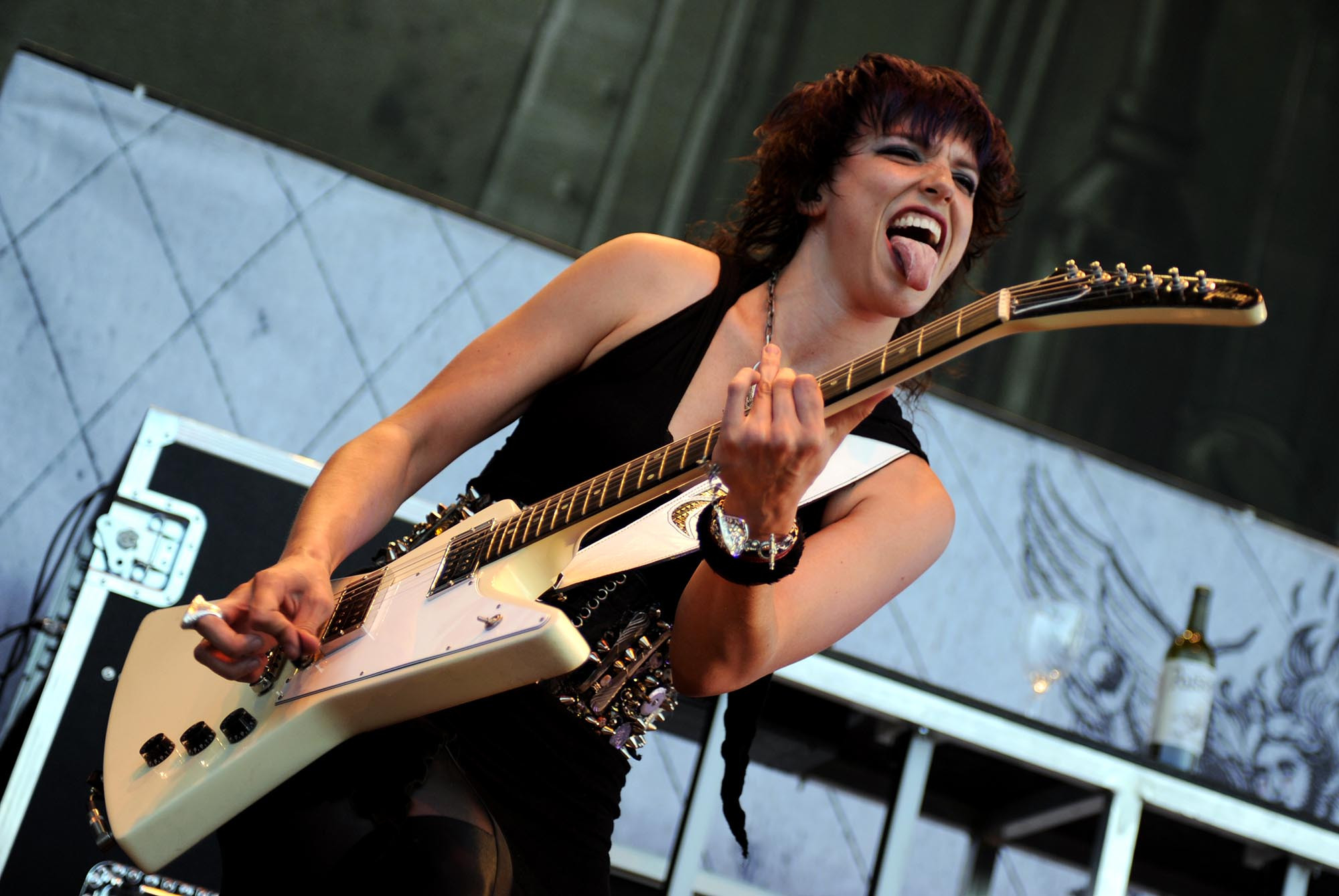 Lzzy Hale of Halestorm performing onstage in 2023
Lzzy Hale of Halestorm performing onstage in 2023
Image Credit: Tim Mosenfelder/Getty Images
Lzzy Hale of Halestorm is a hard rock goddess. Her aggressive rhythm style complements lead guitarist Joe Hottinger. Hale can shred and is influential in 21st-century guitar rock. Gibson made her its first female brand ambassador, designing a signature Explorer model. Hale’s powerful voice and guitar skills make her one of the best guitar players in modern hard rock.
Key Tracks: “I Miss the Misery,” “The Steeple”
Thomas McClary
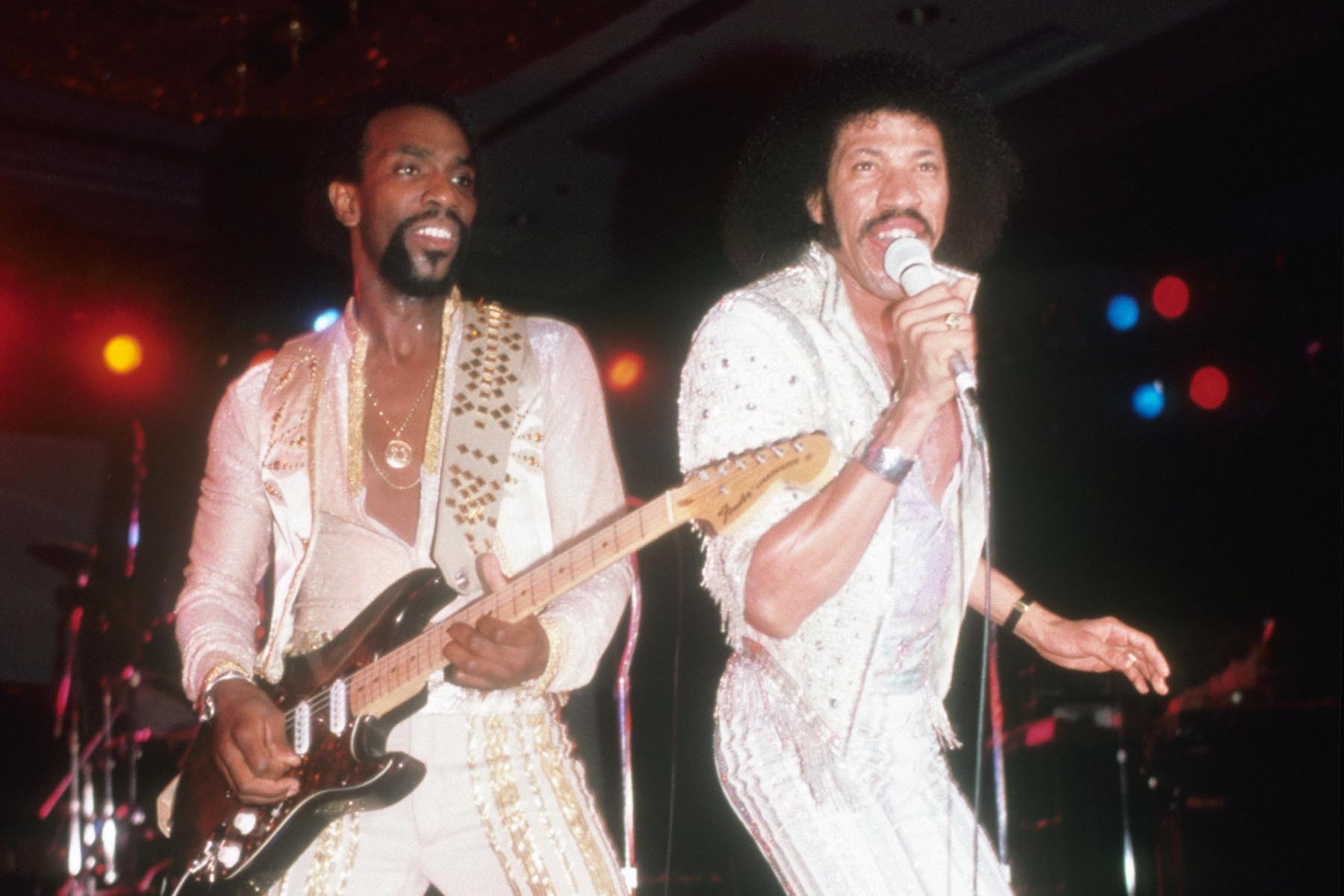 Thomas McClary of Commodores in 1978
Thomas McClary of Commodores in 1978
Image Credit: Alamy
Thomas McClary of The Commodores blended funk, soul, gospel, and country. His guitar work on songs like “Easy” shaped Eighties crossover sound. Influenced by Santana and Jimi Hendrix, he aimed for a “raunchy, raw, authentic sound.” McClary’s genre-blending guitar style makes him one of the best guitar players in funk and soul crossover music.
Key Tracks: “Easy,” “Brick House”
Steve Hackett
Image Credit: Richard E. Aaron/Redferns/Getty Images
Steve Hackett joined Genesis in 1971 and introduced two-hand tapping, years before Van Halen. His solo on “Firth of Fifth” is a prog-rock masterpiece. Hackett’s innovative techniques and contributions to prog rock make him one of the best guitar players in the genre.
Key Tracks: “Horizons,” “Firth of Fifth”
Kurt Vile
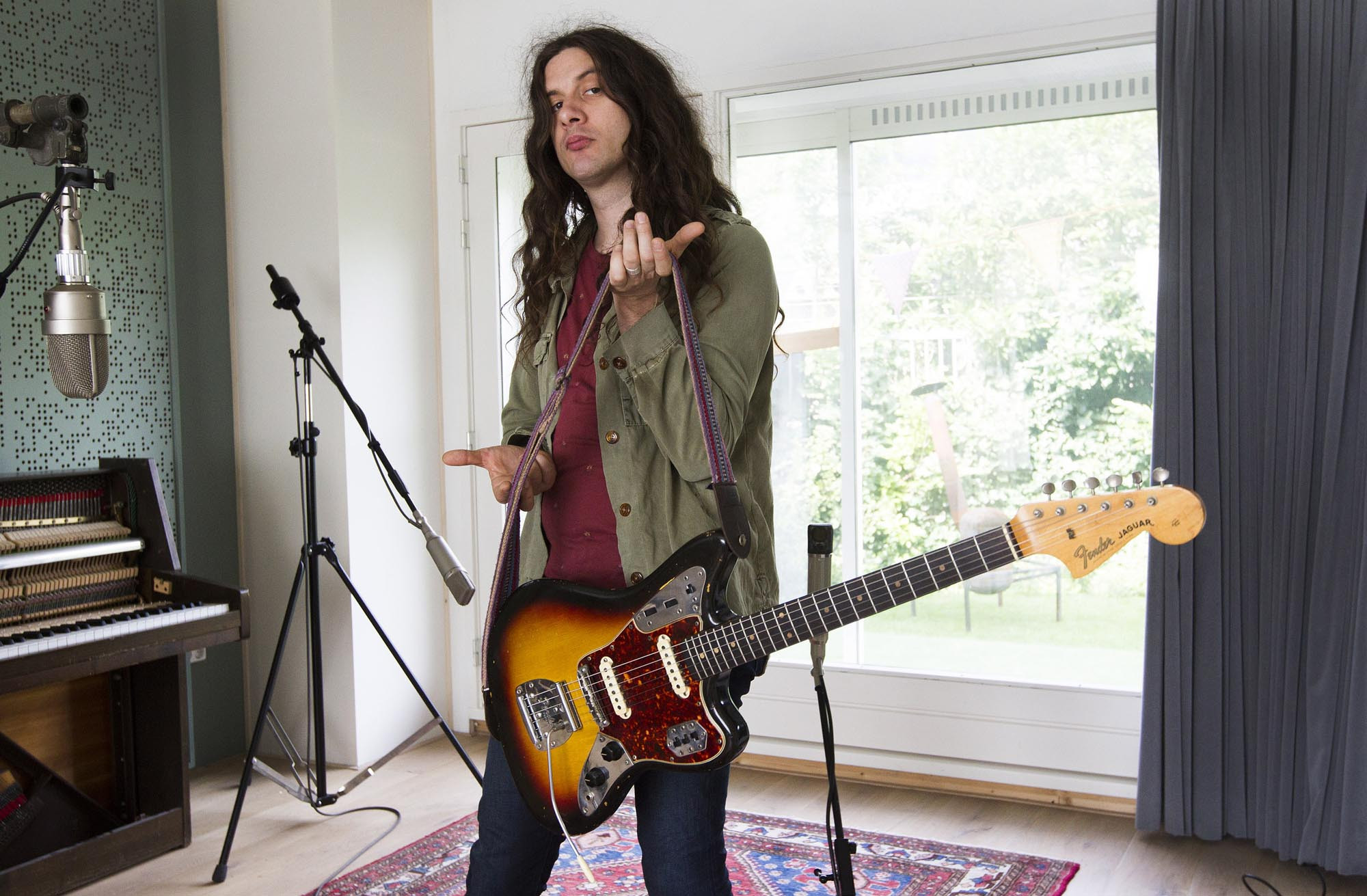 Kurt Vile holding a Fender Jaguar guitar in 2015
Kurt Vile holding a Fender Jaguar guitar in 2015
Image Credit: Paul Bergen/Redferns/Getty Images
Kurt Vile’s slacker persona belies his serious guitar skills. His style blends drones and melodic solos, influenced by his early banjo playing. “Banjos are in an open tuning, and they’ve got that high drone string,” he explained. Vile’s unique and subtly virtuosic style makes him one of the best guitar players in indie rock and Americana.
Key Tracks: “Pretty Pimpin,” “Wakin on a Pretty Day”
Keiji Haino
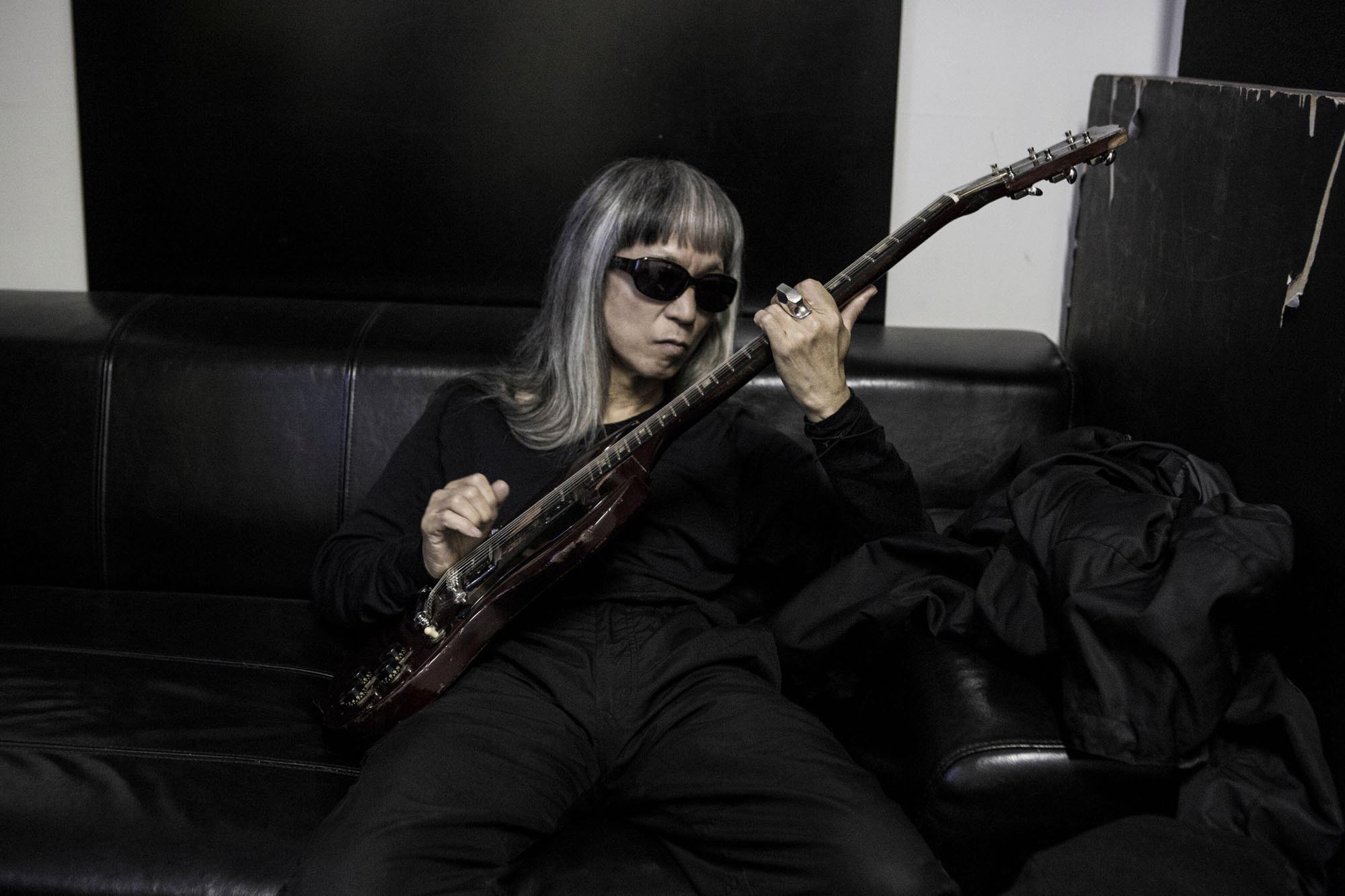 Keiji Haino portrait
Keiji Haino portrait
Image Credit: Alamy
Keiji Haino’s free-form guitar performances are cathartic and noisy. He blends soft chords with squalls of fuzz. “People practice really hard because they want people to check them out,” he told Vice Japan. “And then they say it’s improvisation. That drives me nuts.” Haino’s extreme and improvisational style marks him as one of the best guitar players in noise and experimental music.
Key Tracks: “A Shredded Coiled Cable Within This Cable Sincerity Could Not be Contained,” “Why in the Courtesy of the Prey Always Confused With the Courtesy of the Hunters Pt. 1”
Lucy Dacus
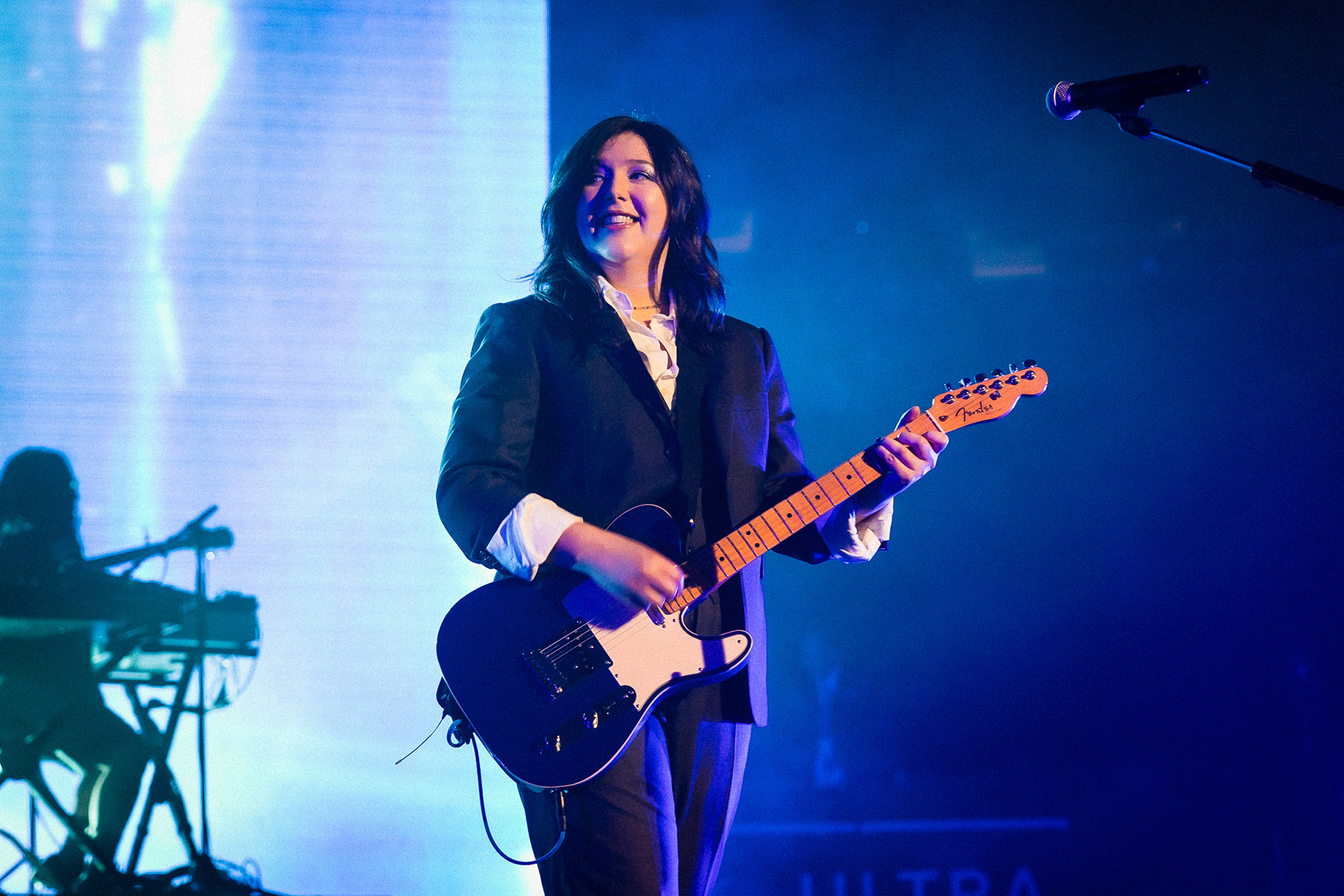 Lucy Dacus playing guitar onstage
Lucy Dacus playing guitar onstage
Image Credit: Griffin Lotz for Rolling Stone
Lucy Dacus’s guitar is essential to her music, though understated. From “I Don’t Wanna Be Funny Anymore” to boygenius, her arrangements are key. Live performances of “Night Shift” showcase her dynamic playing. Dacus’s subtle yet powerful guitar work makes her one of the best guitar players in contemporary indie folk.
Key Tracks: “Night Shift,” “I Don’t Wanna Be Funny Anymore”
José Feliciano
 José Feliciano performing onstage in 1973
José Feliciano performing onstage in 1973
Image Credit: Evening Standard/Hulton Archive/Getty Images
José Feliciano, beyond “Feliz Navidad,” is an acoustic guitar virtuoso. His lyrical and ferocious playing blends boleros, folk, rock, jazz, soul, and bossa nova. His 1968 “California Dreamin’” and “Light My Fire” reinventions were groundbreaking. Feliciano’s stylistic range and virtuosity make him one of the best guitar players in Latin-influenced pop and rock.
Key Tracks: “Light My Fire,” “Here, There and Everywhere”
Nick Zinner
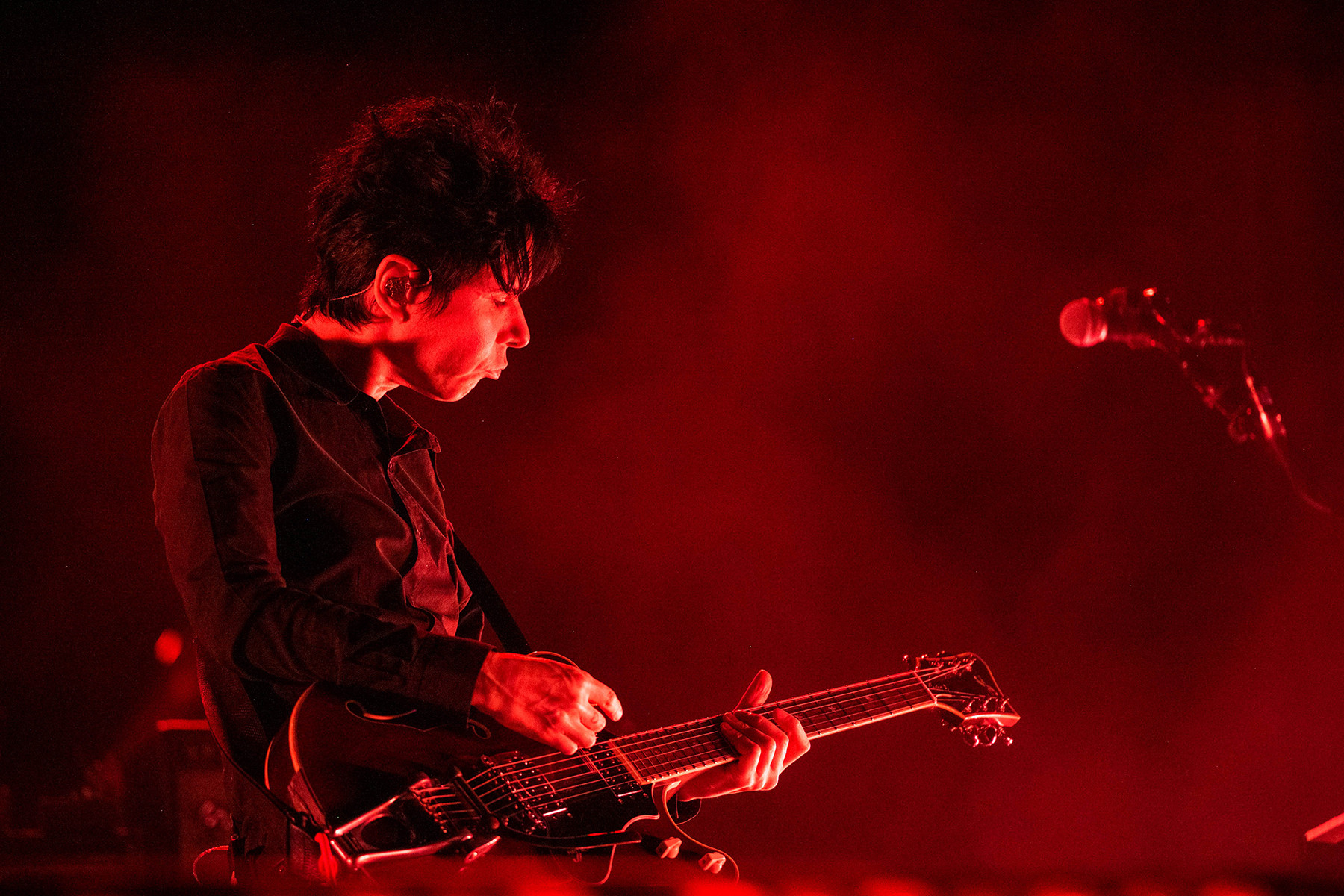 Nick Zinner portrait
Nick Zinner portrait
Image Credit: Sacha Lecca for Rolling Stone
Nick Zinner of Yeah Yeah Yeahs aimed for “trashy, punky, grimy.” His style fuses dance-punk, Van Halen panache, Rowland S. Howard violence, and Johnny Marr grandeur. His minimal yet emotional guitar work defines Yeah Yeah Yeahs’ sound. Zinner’s innovative and impactful style makes him one of the best guitar players in dance-punk and indie rock.
Key Tracks: “Y Control,” “Maps,” “Gold Lion”
Kaki King
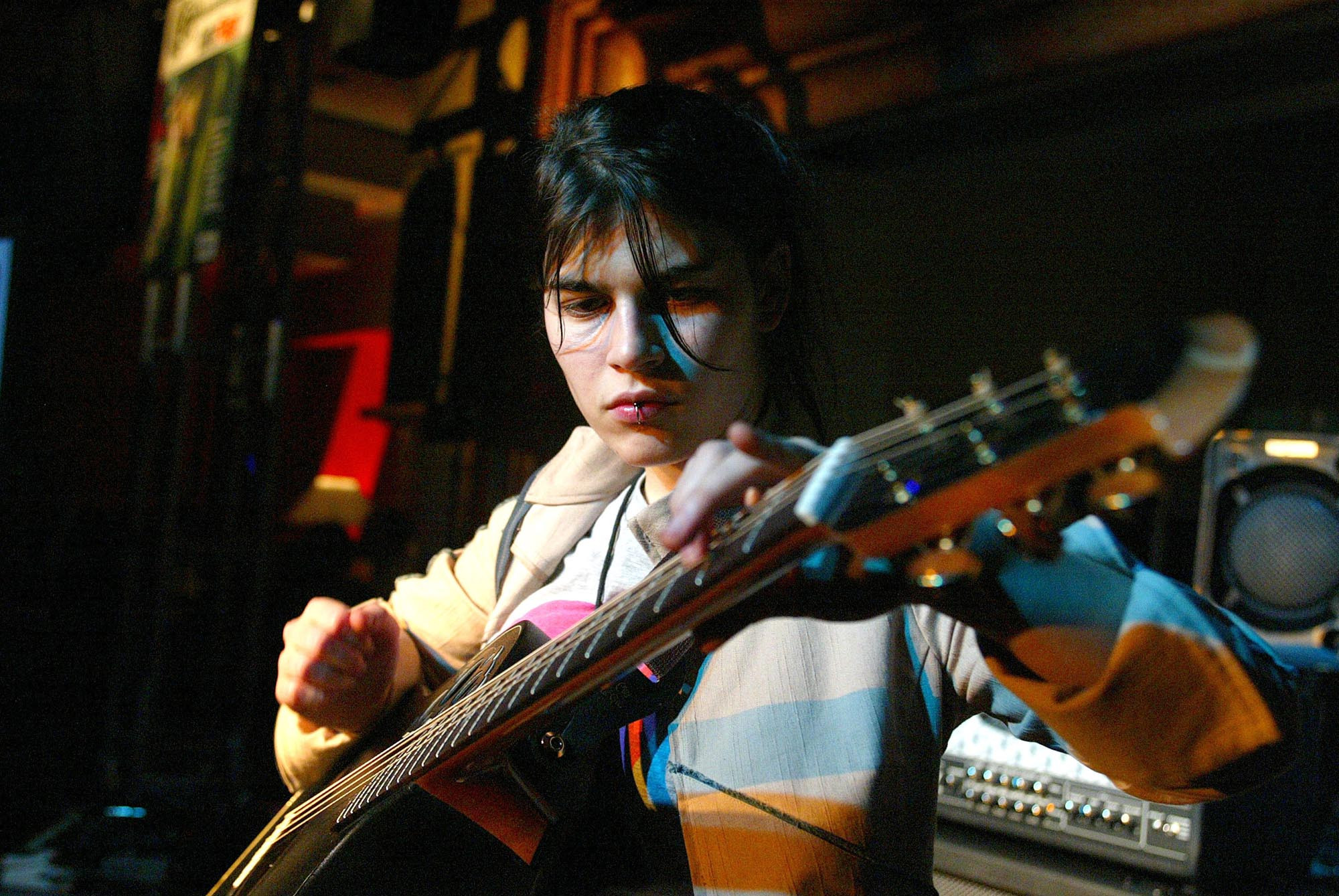 Kaki King portrait
Kaki King portrait
Image Credit: Jeffrey Mayer/WireImage
Kaki King is a sonic adventurer, blending Preston Reed and John Cage influences. She experiments with tunings, treated guitars, loops, fingerstyle, tapping, and percussive techniques. “When you tune your guitar differently, all of a sudden your fingers and your mind have to be creative again,” she explained. King’s experimental and virtuosic approach makes her one of the best guitar players in contemporary acoustic music.
Key Tracks: “Playing With Pink Noise,” “Skimming the Fractured Surface to a Place of Endless Light”
Gary Clark Jr.
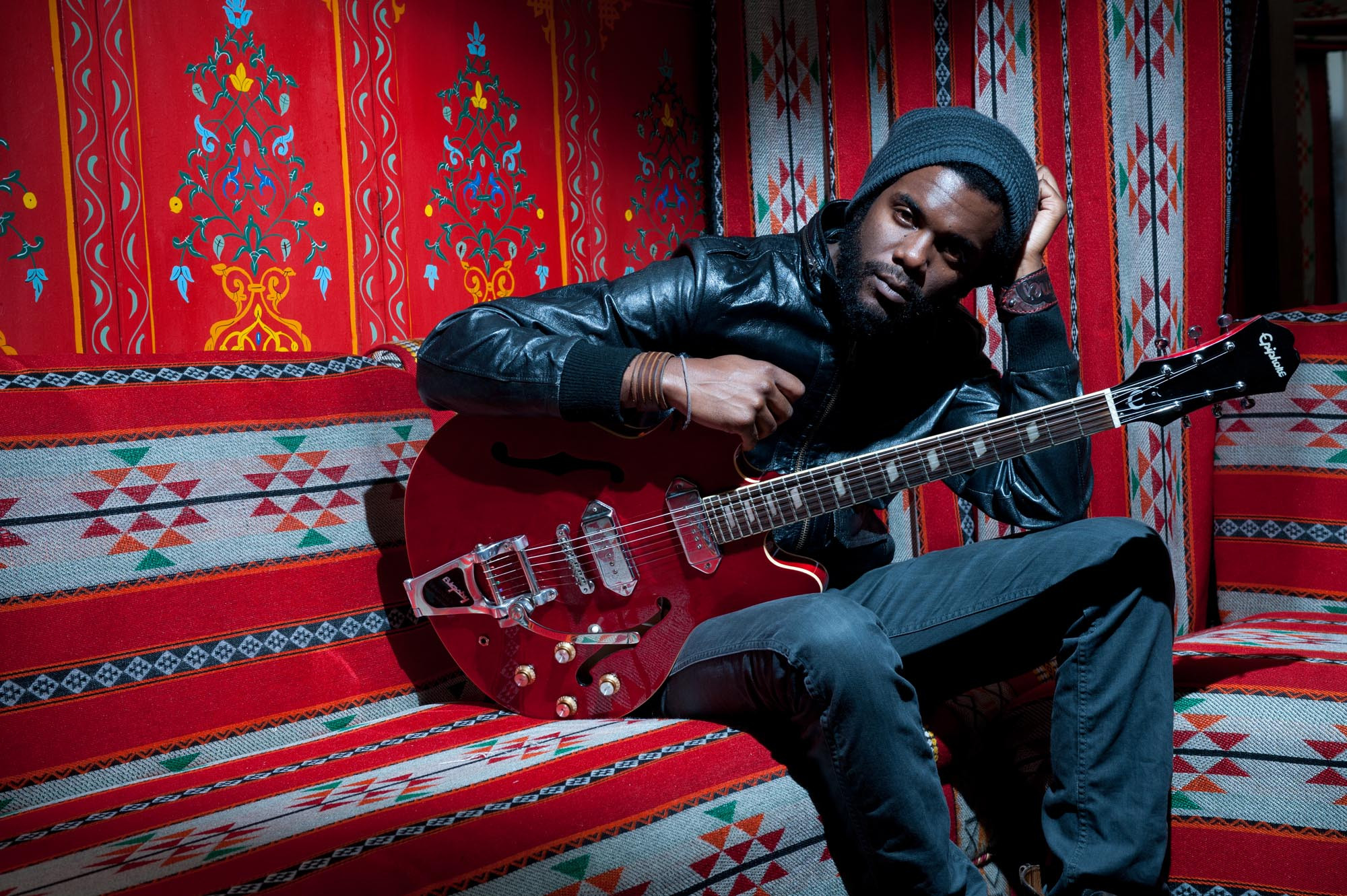 Gary Clark Jr. portrait in 2012
Gary Clark Jr. portrait in 2012
Image Credit: Rob Monk/Guitarist Magazine/Future/Getty Images
Gary Clark Jr. transcends blues-rock expectations, incorporating soul, funk, grunge, and hip-hop. He collaborates across genres. “I don’t think that I’m reaching my full potential if I just do what people expect of me,” he told Rolling Stone. Clark Jr.’s genre-bending approach and fiery playing make him one of the best guitar players in contemporary blues and rock.
Key Tracks: “This Land,” “Grinder”
Amadou Bagayoko
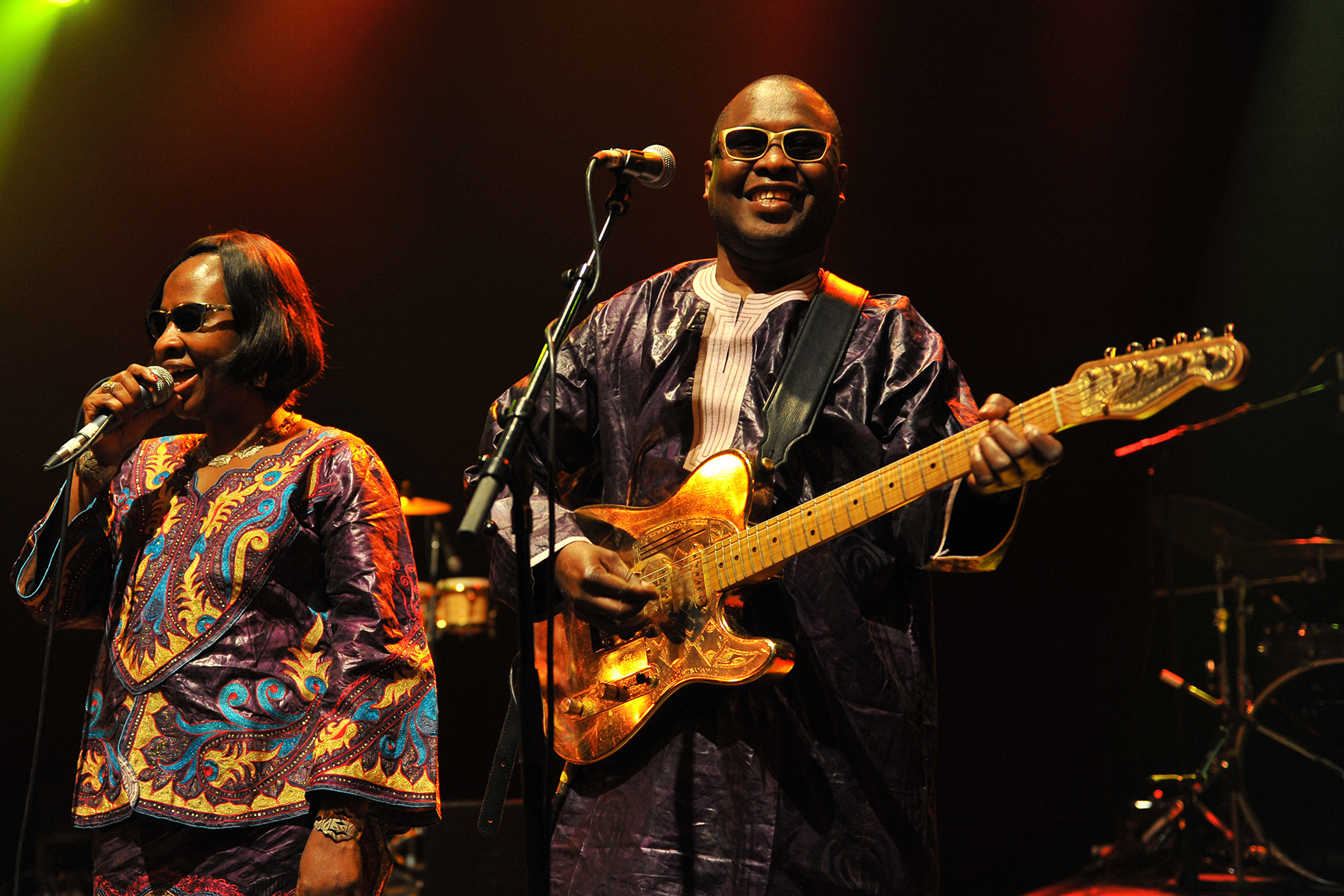 Amadou Bagayoko of Amadou & Mariam performing onstage in 2012
Amadou Bagayoko of Amadou & Mariam performing onstage in 2012
Image Credit: C Brandon/Redferns/Getty Images
Amadou Bagayoko of Amadou & Mariam blends Malian music with Western pop influences like Led Zeppelin and Eric Clapton. His jaunty, occasionally skronky guitar leads drive their melodic duets. “People are often surprised when we explain how much we were influenced by Western pop music,” he said. Bagayoko’s cross-cultural guitar style makes him one of the best guitar players in world fusion music.
Key Tracks: “Djanfa,” “Ce N’est Pas Bon”
Justin Broadrick
 Justin Broadrick of Godflesh onstage
Justin Broadrick of Godflesh onstage
Image Credit: Karjean Levine/Getty Images
Justin Broadrick, in Godflesh, Napalm Death, and Jesu, created a unique guitar lexicon. His steamrolling riffs and textures in Godflesh, grindcore pioneering in Napalm Death, and noise layers in Jesu are distinctive. “His guitar sighs, groans, and weeps, but nothing else sounds like it,” noted Kerry King. Broadrick’s innovative and heavy guitar work makes him one of the best guitar players in industrial metal and experimental music.
Key Tracks: “Like Rats,” “Silver,” “Scum”
Hugh McCracken
 Hugh McCracken portrait during a recording session
Hugh McCracken portrait during a recording session
Image Credit: David Gahr/Getty Images
Hugh McCracken, a session guitarist, left his mark on countless classics. His leads are heard on Steely Dan’s “Hey Nineteen” and Van Morrison’s “Brown Eyed Girl,” and his acoustic work on Roberta Flack’s “Killing Me Softly.” He enriched songs by Paul Simon, Alicia Keys, and John Lennon. McCracken’s tasteful and vital contributions make him one of the best guitar players in studio session history.
Key Tracks: “Hey Nineteen,” “Killing Me Softly With His Song”
Eric Johnson
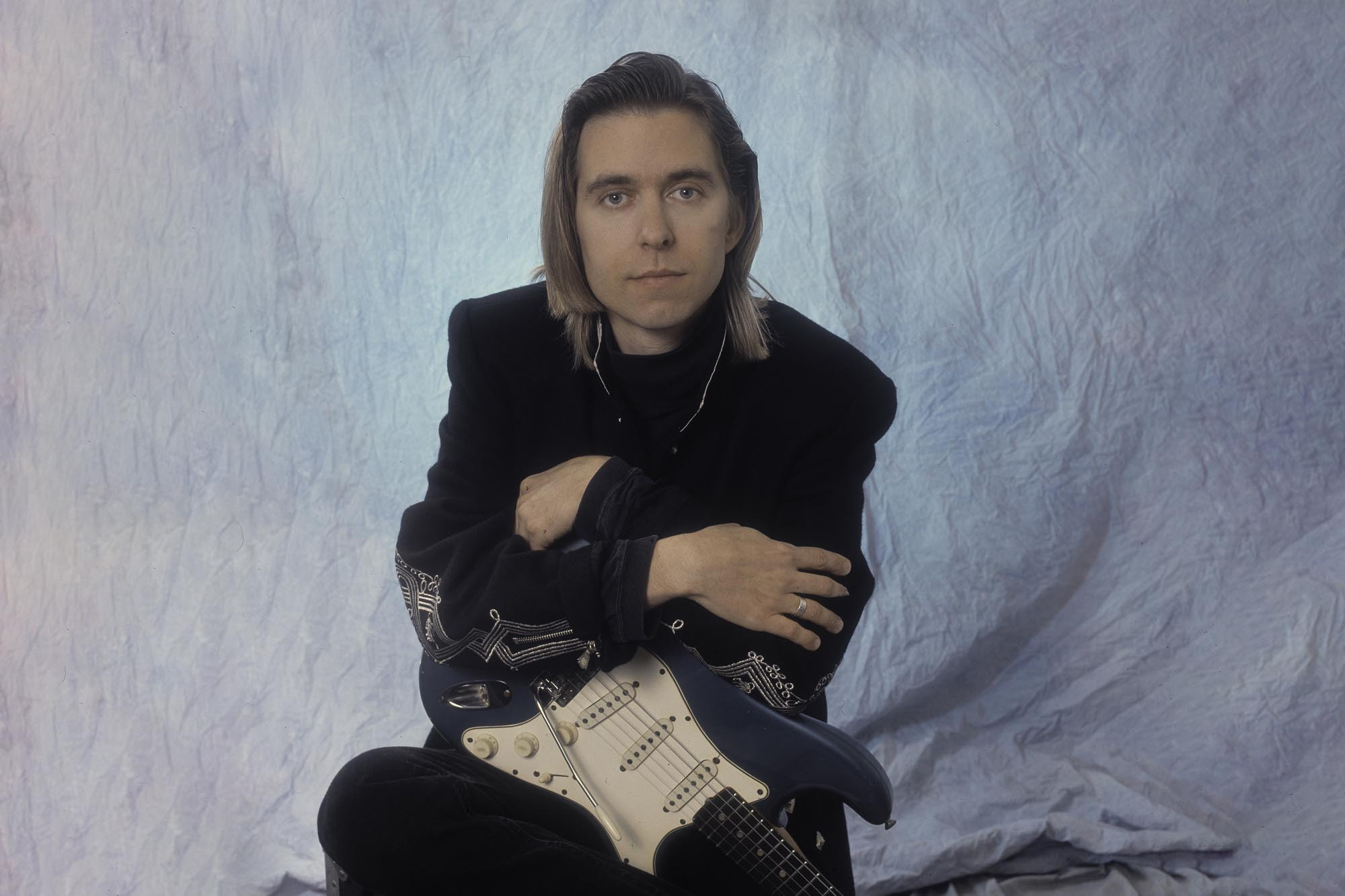 Eric Johnson portrait in 1991
Eric Johnson portrait in 1991
Image Credit: Paul Natkin/Getty Images
Eric Johnson is a technician admired by peers like Steve Morse and Stevie Ray Vaughan. His fusion style leans rock, rising in Austin in the Seventies. His instrumental album Ah Via Musicom went platinum. Known for guitar-centric collaborations like G3, Johnson’s virtuosity and technical skill place him among the best guitar players in instrumental rock.
Key Tracks: “Cliffs of Dover,” “Benny Man’s Blues”
Lynn Taitt
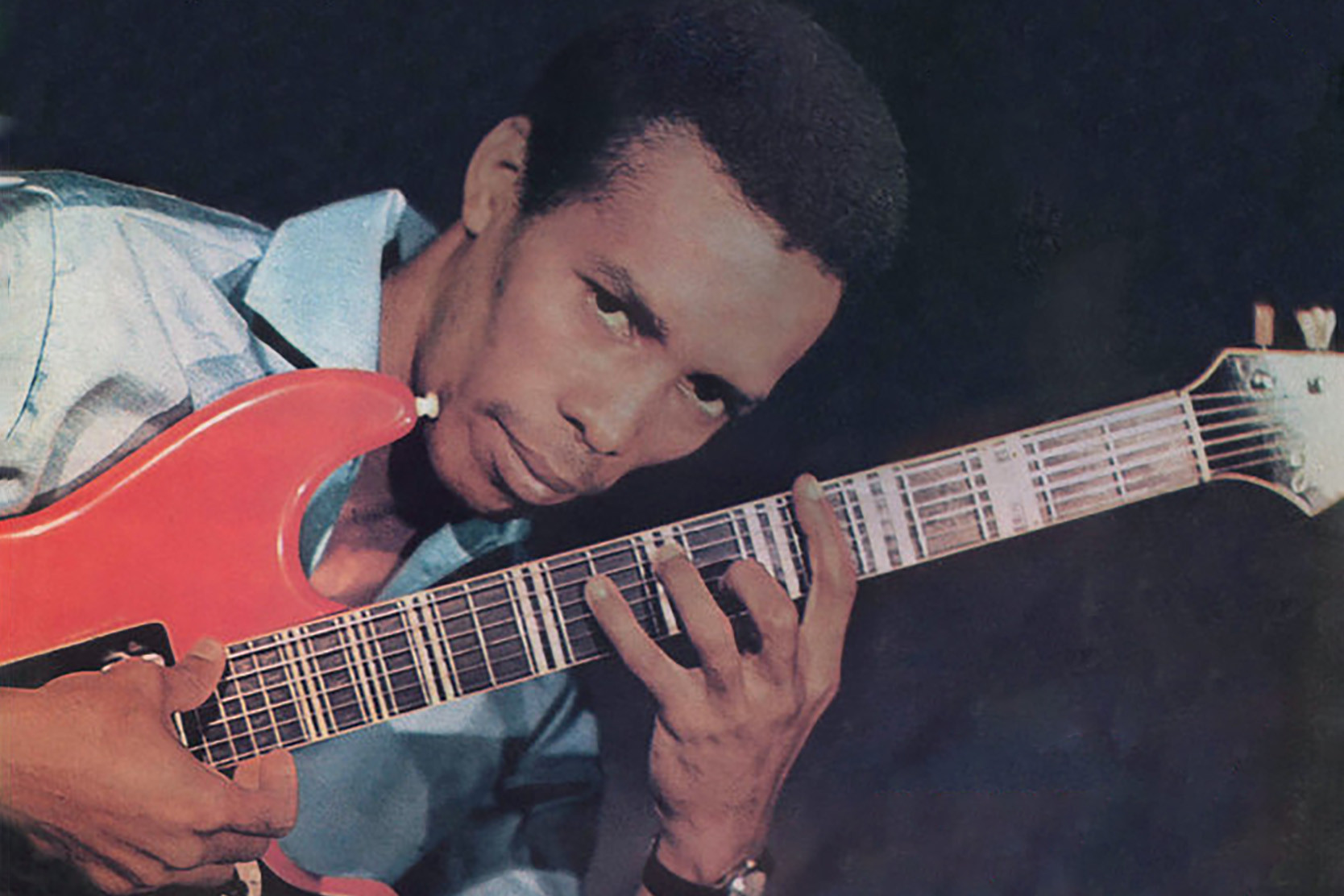
Image Credit: Federal Records
Lynn Taitt created the guitar sound of rocksteady music in Jamaica. His playing on “Take It Easy” and “Tougher Than Tough” defined the style. He became Jamaica’s top session guitarist after Ernest Ranglin. His work on “007 (Shanty Town)” is iconic. His influence on rocksteady and reggae guitar makes him one of the best guitar players in Jamaican music history.
Key Tracks: “007 (Shanty Town),” “Take It Easy”
Grant Green
 Grant Green performing onstage in 1975
Grant Green performing onstage in 1975
Image Credit: Janet Fries/Getty Images
Grant Green, from hard bop, became a soul-jazz pioneer. A Charlie Parker fan, his Blue Note albums like Idle Moments are classics. His guitar has been sampled in hip-hop classics. Green’s cool grooves and influence on jazz and hip-hop make him one of the best guitar players in jazz and sampled music.
Key Tracks: “Idle Moments,” “Jean De Fleur,” “On Green Dolphin Street”
Vince Gill
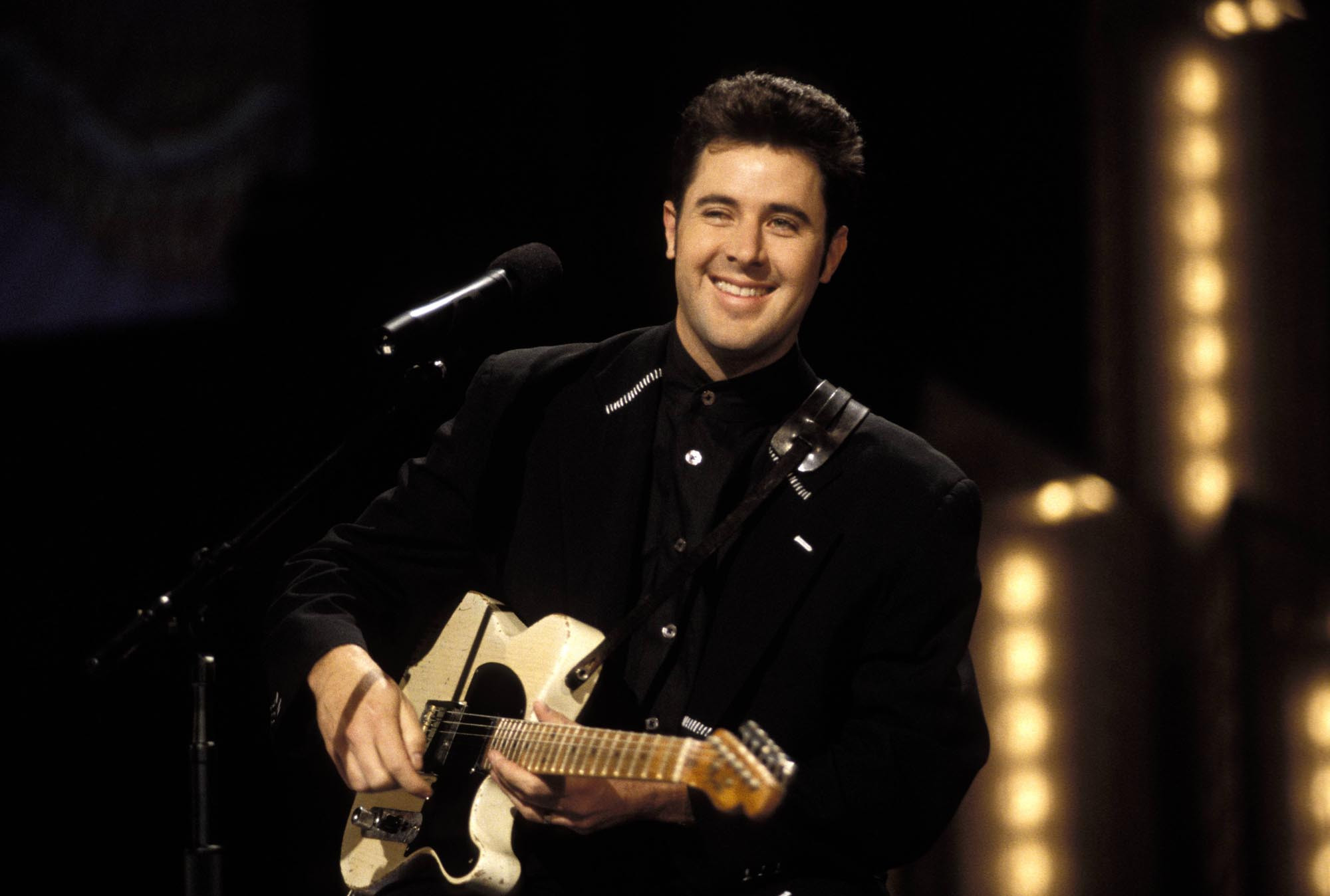 Vince Gill portrait
Vince Gill portrait
Image Credit: Beth Gwinn/Redferns/Getty Images
Vince Gill is celebrated as a vocalist, but also a lethal guitarist. His chicken picking and twangy bends are hallmarks. He’s paid homage to country guitar legends and played sessions for countless artists. A touring member of the Eagles, Gill’s vocal and guitar talents make him one of the best guitar players in country and rock.
Key Tracks: “Liza Jane,” “Oklahoma Borderline”
Garry ‘Diaper Man’ Shider
 Garry Shider of Parliament performing onstage in 1977
Garry Shider of Parliament performing onstage in 1977
Image Credit: Michael Ochs Archives/Getty Images
Garry Shider, Parliament/Funkadelic guitarist, was known as “Diaper Man.” Beyond stage antics, he was a master of both searing leads and rhythm guitar, co-writing hits like “One Nation Under a Groove.” His contributions to P-Funk and versatile guitar skills make him one of the best guitar players in funk music.
Key Tracks: “Cosmic Slop,” “One Nation Under a Groove”
